From psionic artifacts to fusion-powered weaponry, the tools that shape destiny across the Seven Realms. Each item tells a story of innovation, power, and the complex interplay between humanity and the forces that seek to challenge it.
This compendium of notable artifacts, weapons, and technologies is continuously expanding as new discoveries emerge from across the Sol System. Check back regularly for updates on the tools that shape the fate of humanity in the 23rd century.
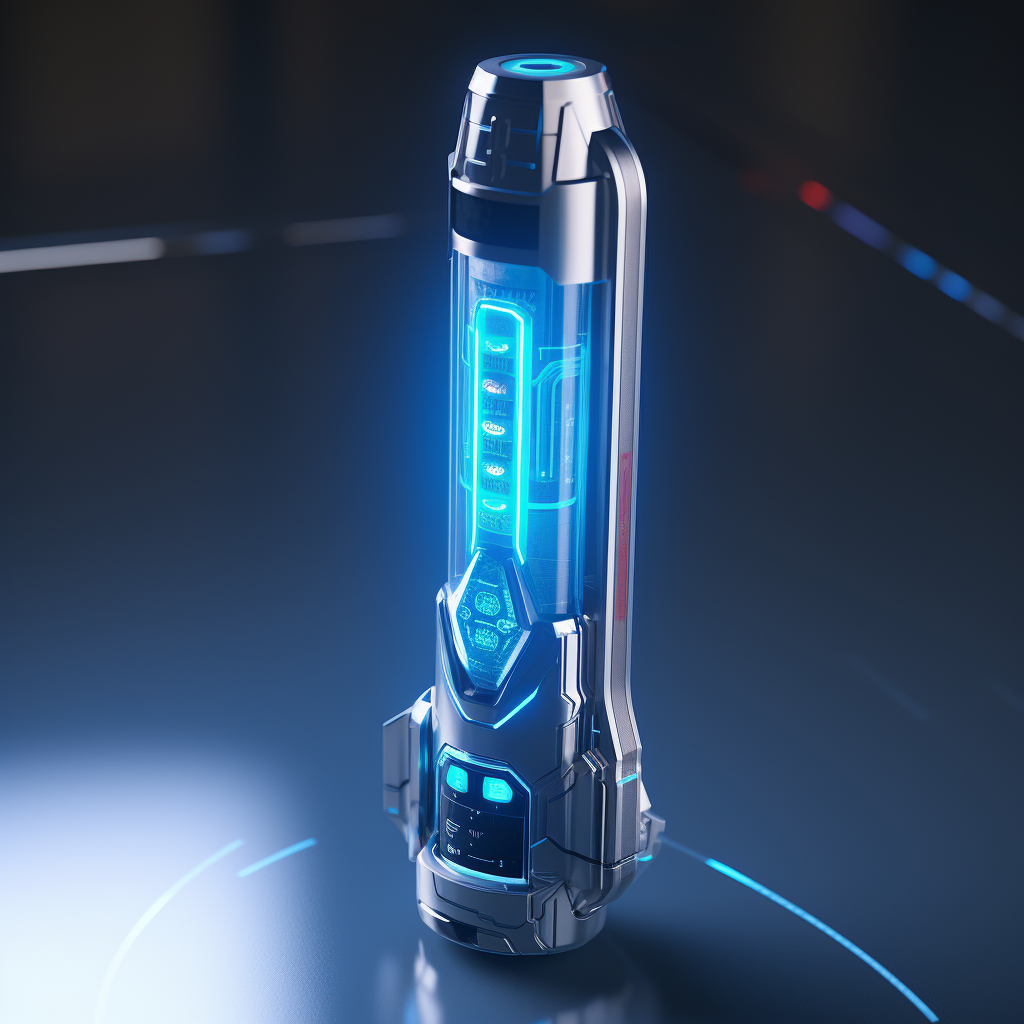
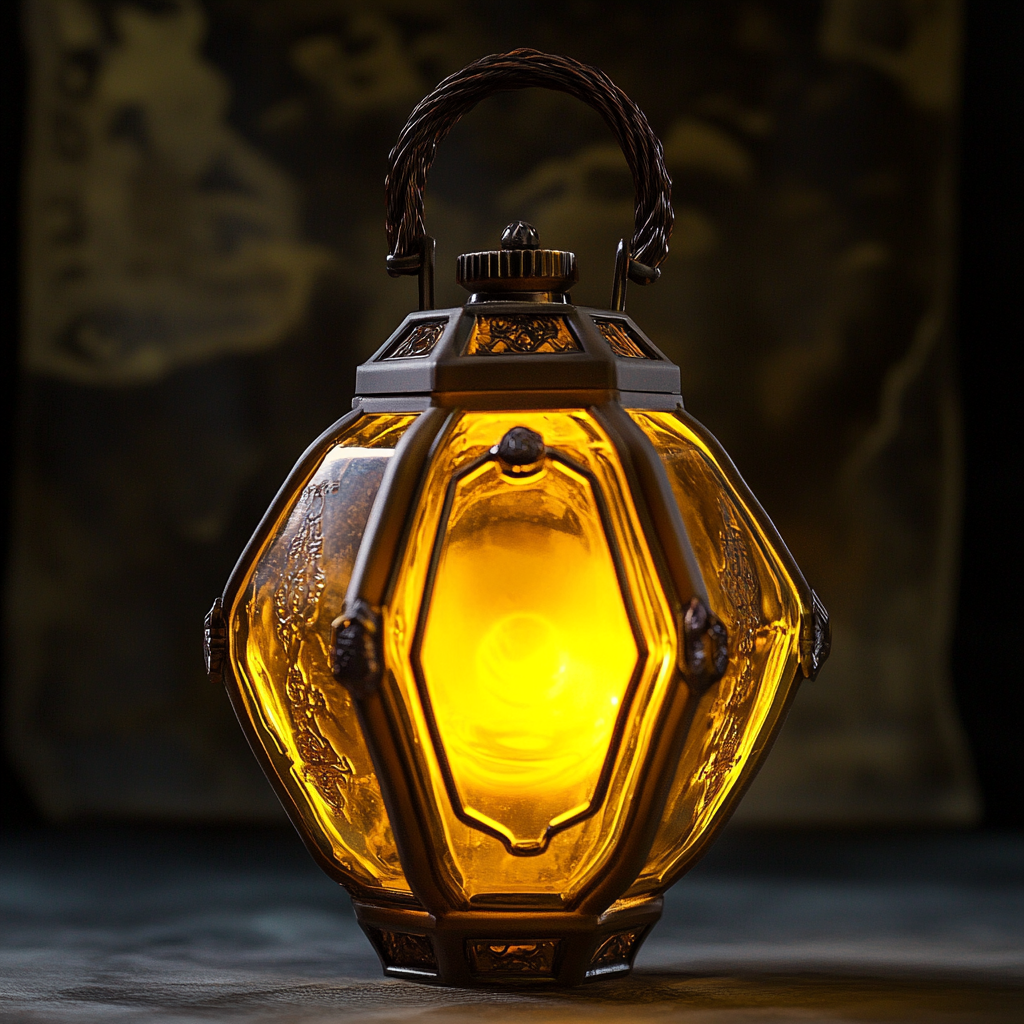
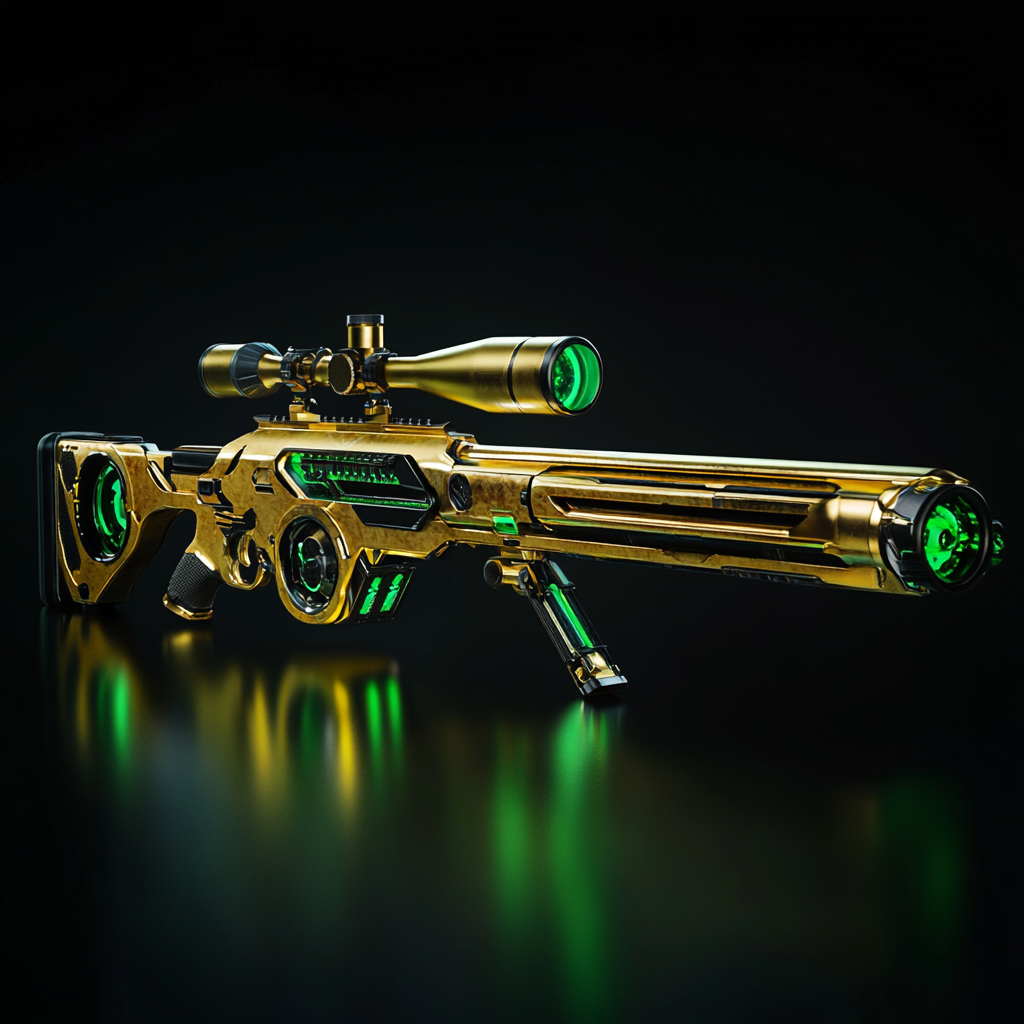
Ranged
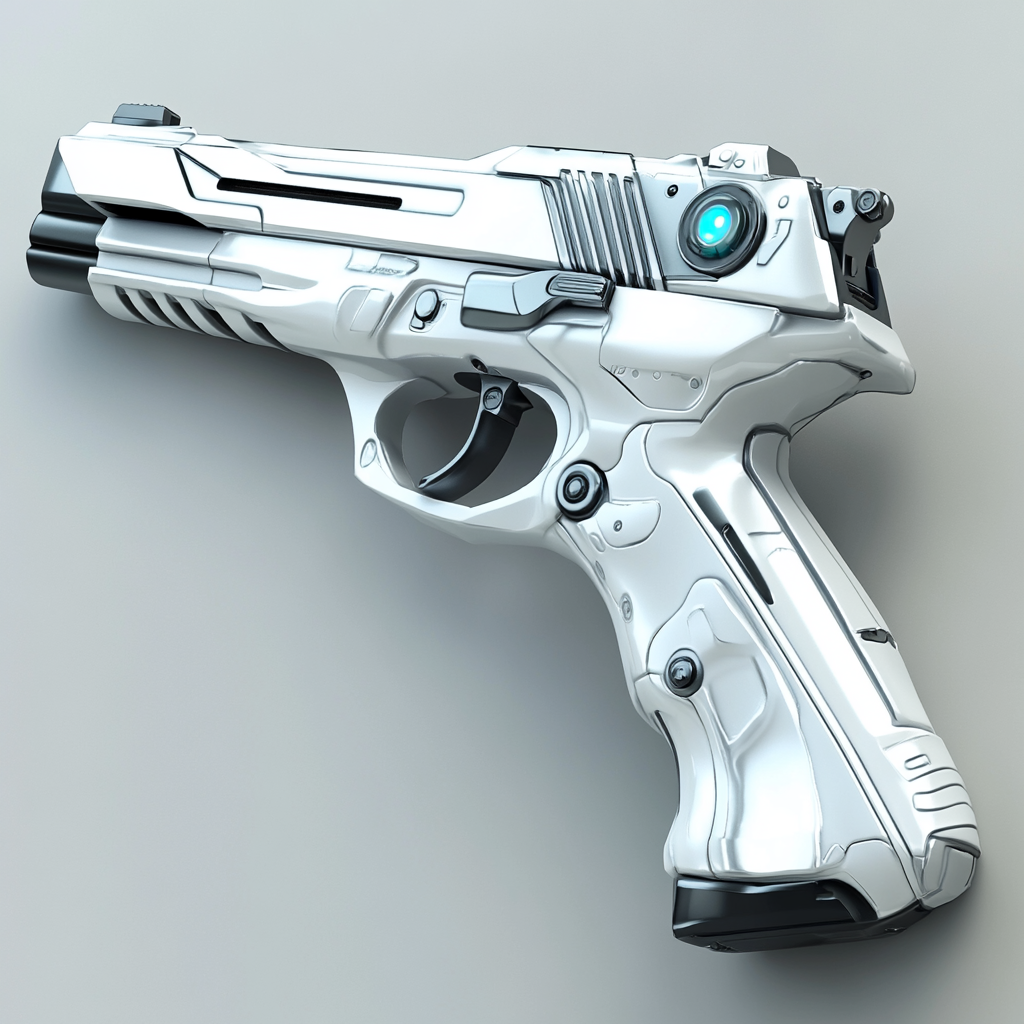
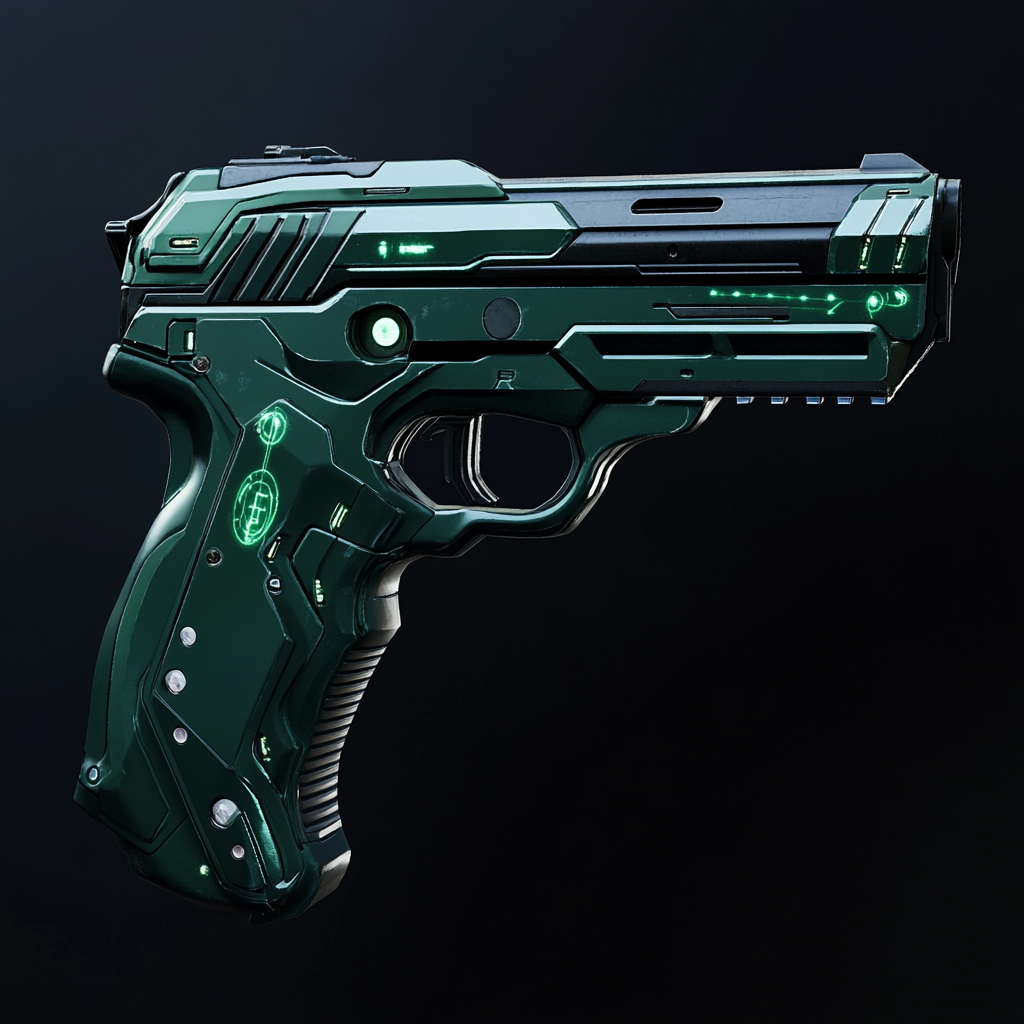
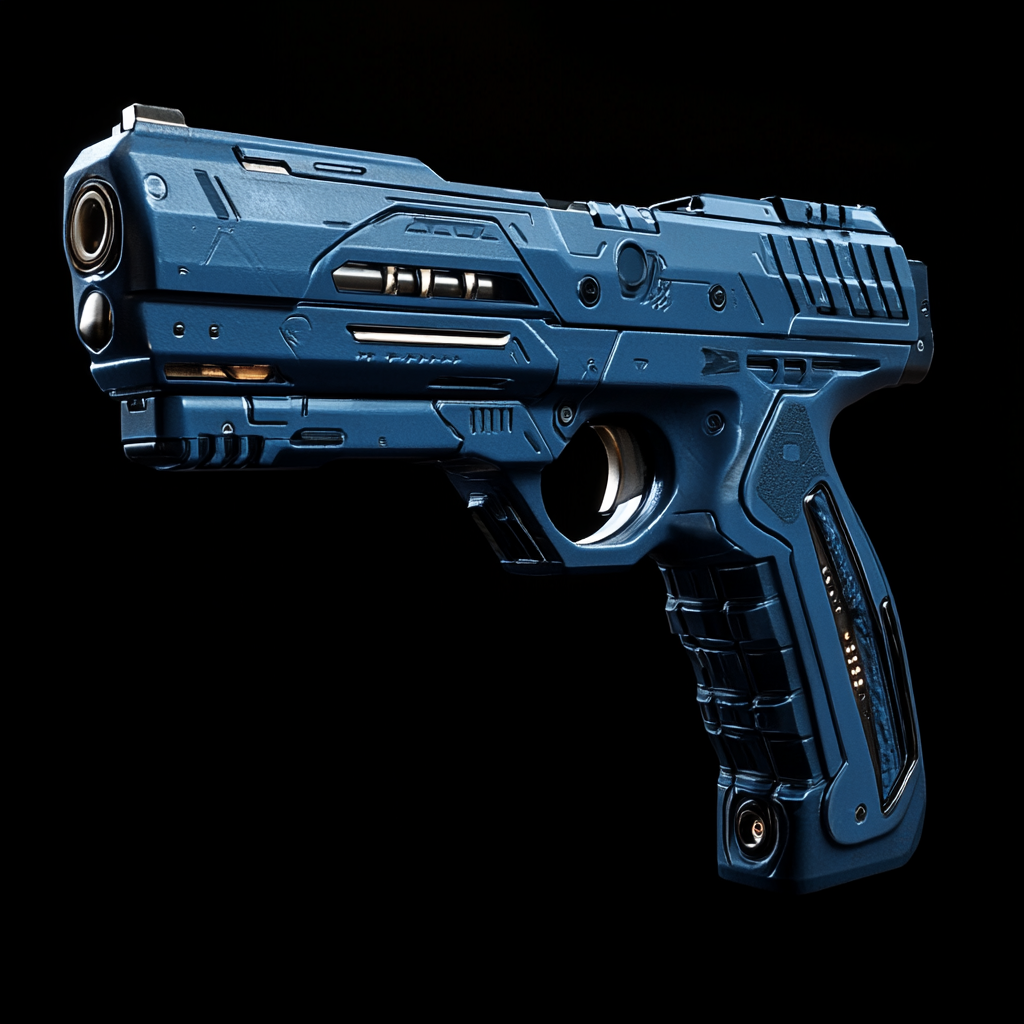
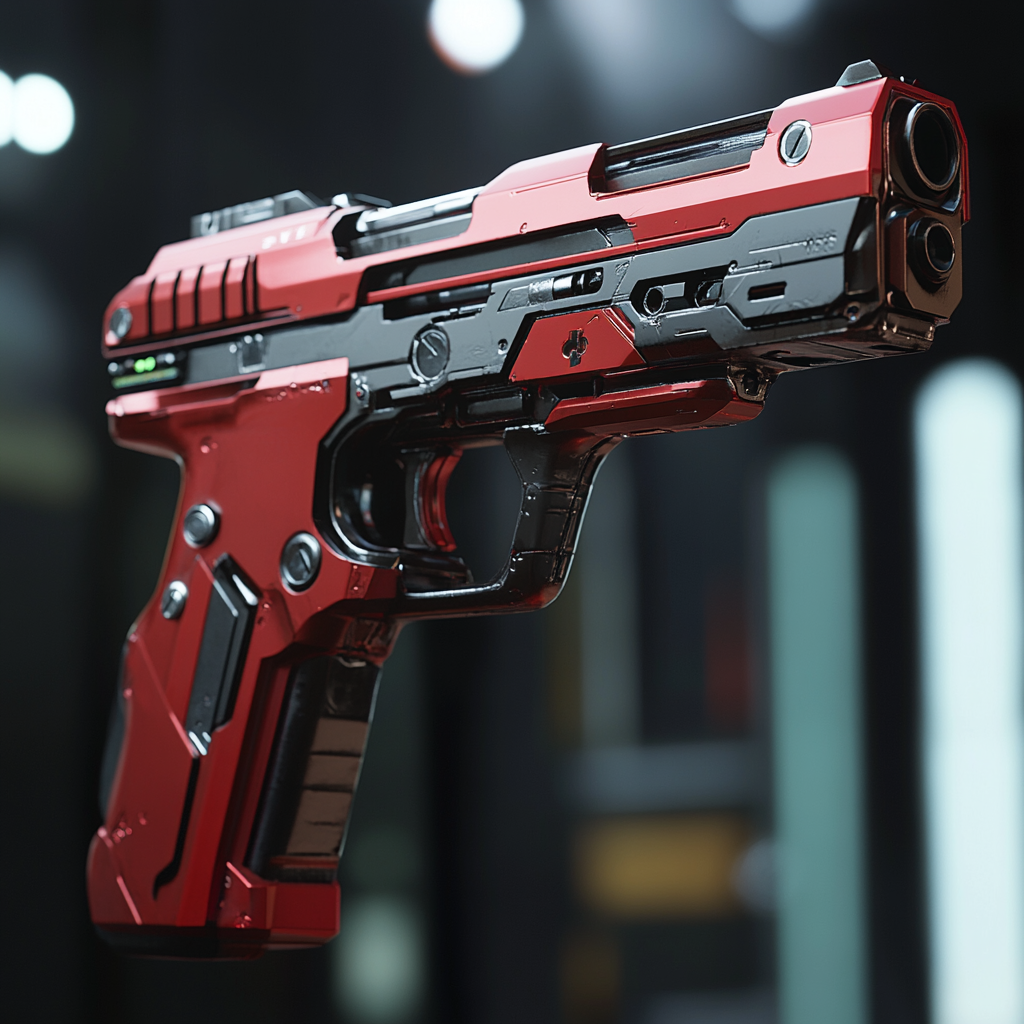

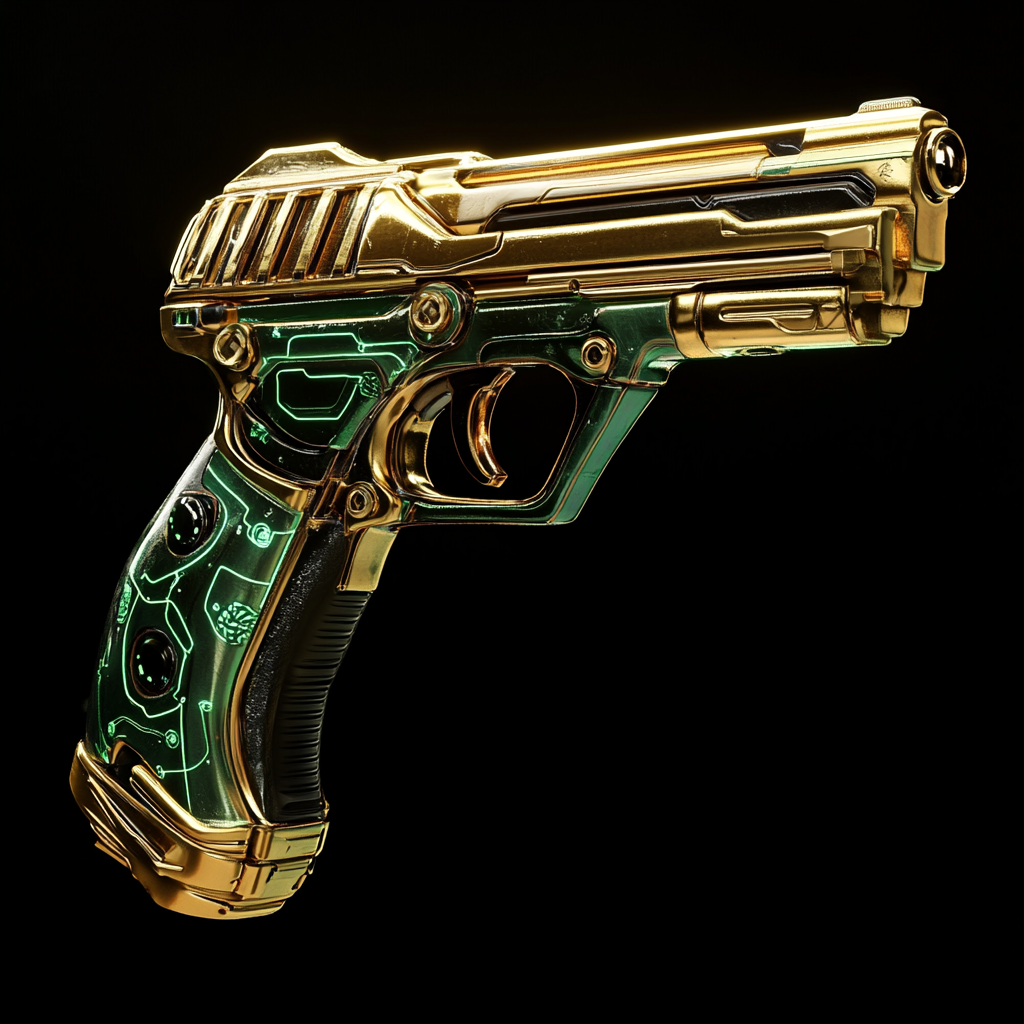
Pistols
Type 1: 10mm Magnum
Born from the manufacturing prowess of pre-annexation Taiwan, the 10mm Magnum has become the quintessential civilian sidearm across freedom-loving nations. Legal for purchase and carry by adults in countries like the Alliance, Spain, and several smaller republics, these lightweight pistols have earned a place in everything from university dormitories to corporate boardrooms.
The 10mm Magnum’s greatest strength lies in its modularity. Standard models serve as blank canvases for customization, with aftermarket modifications ranging from extended barrels and enhanced targeting systems to exotic ammunition types. However, enthusiasts quickly discover that upgrades often cost more than the base weapon. A pistol that starts affordable can become an expensive obsession. College students across Alliance territory have embraced these weapons as symbols of personal freedom, leading to their ubiquity on campuses from Boston to New Angeles. The sight of students casually carrying holstered 10mm Magnums speaks to a society where personal protection is considered both a right and a responsibility.
Type 2: Plasma Handgun
The Emerald Directorate’s contribution to personal sidearms reflects their commitment to clean energy and technological sophistication. Plasma handguns trade the mechanical simplicity of ballistic weapons for the elegant complexity of directed energy systems, creating sidearms that are as much engineering marvels as defensive tools. The ability to switch between different plasma configurations—from low-power stunning bolts to armor-piercing focused beams—makes them invaluable for security forces and explorers who face unpredictable threats across diverse environments.
The signature feature of military-grade plasma handguns is their charged shot capability. By holding the trigger, operators can build up plasma energy into an explosive sphere that creates lingering energy fields on impact. This devastating attack comes at the cost of dramatically increased power consumption and longer reload times—a trade-off that requires tactical discipline and perfect timing.
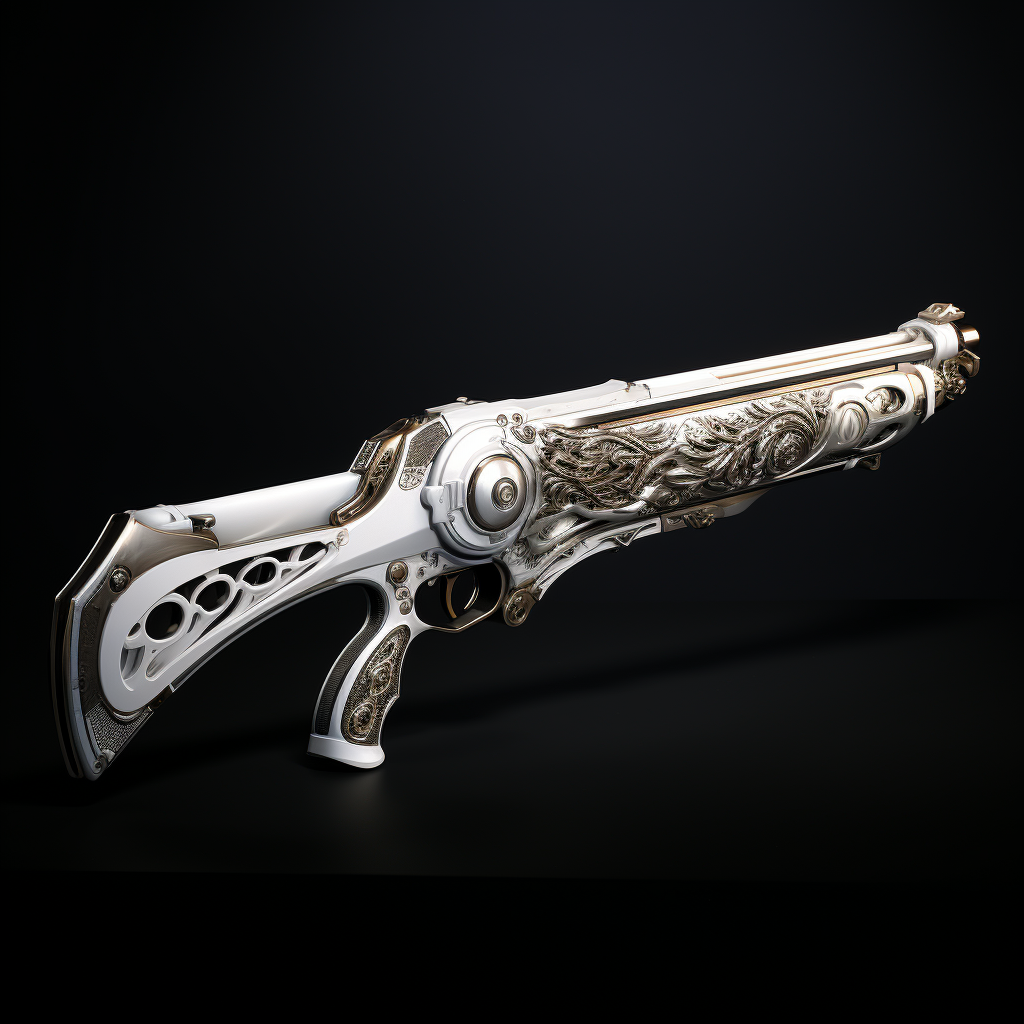
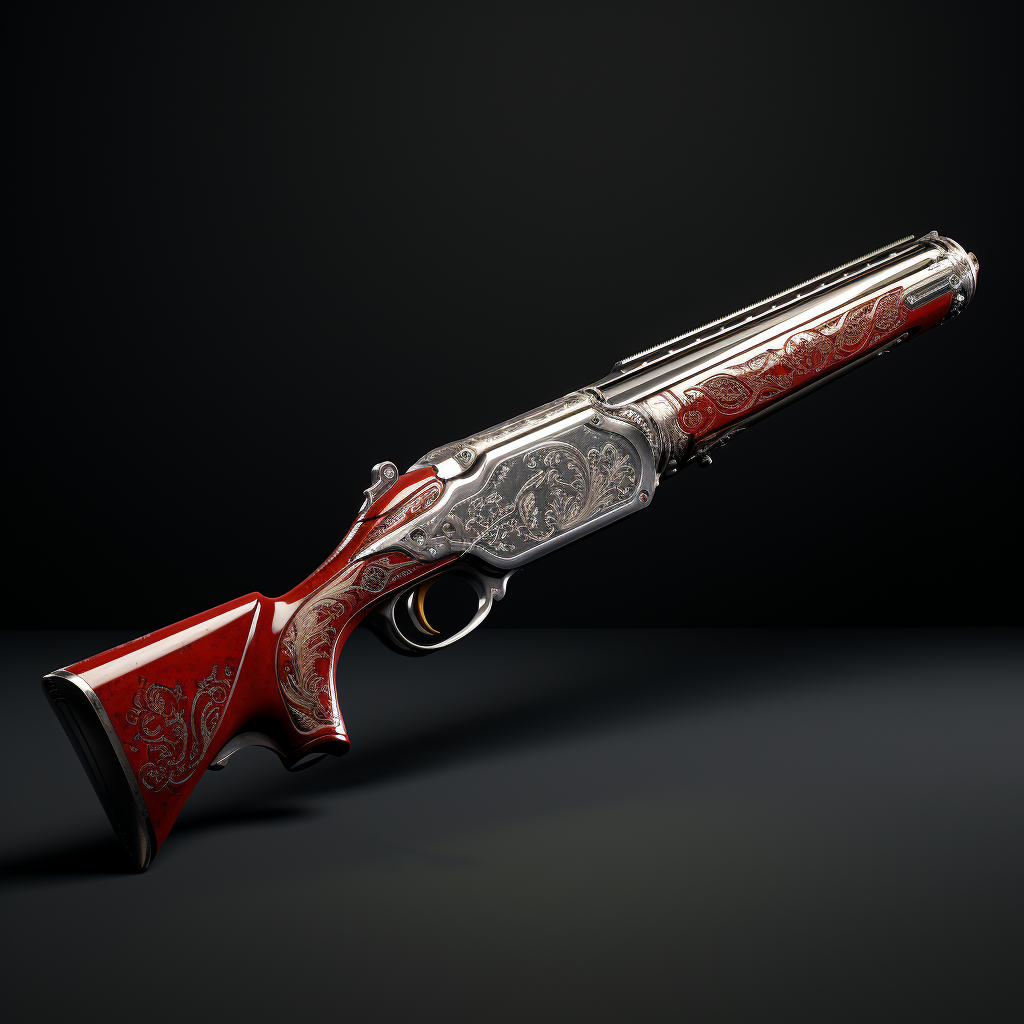
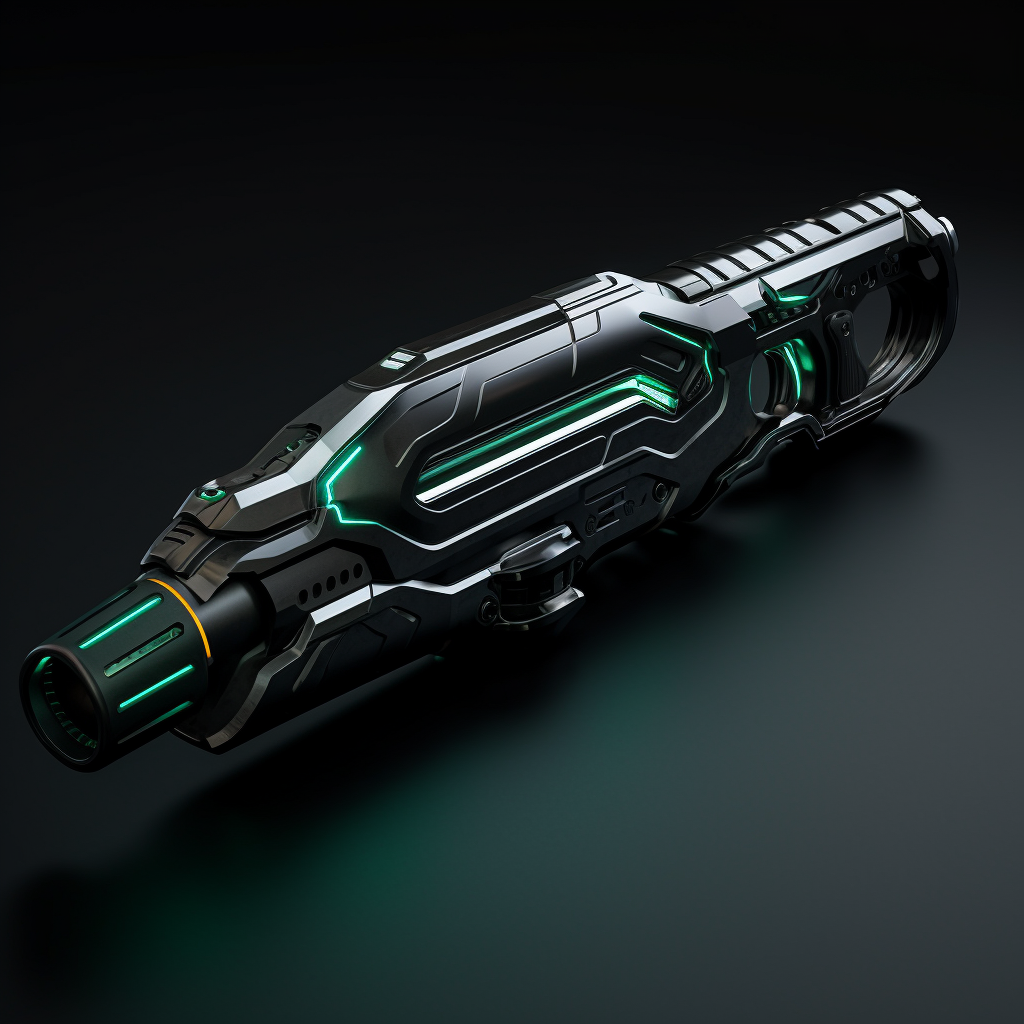
Shotguns
Type 1: Alliance Breacher
The Terra Alliance’s Breacher emerged from the brutal lessons of Osram’s tunnel wars, where marines needed a weapon that could instantly dominate the fatal funnel of a doorway. Its distinctive white composite frame conceals a revolutionary recoil dampening system that allows single-handed operation—a feature originally developed for zero-gravity boarding actions but equally valuable for aggressive dual-wielders.
The Breacher’s signature feature is its “Cascade Chamber”—a rotating cylinder that can hold three different ammunition types simultaneously, selectable via thumb switch. This allows operators to cycle between breaching rounds, buckshot, and specialized loads without manual reloading. The shortened barrel features magnetic field stabilizers that maintain lethal spread patterns despite the compact design, while the integral muzzle brake redirects blast energy away from the user’s face during one-handed firing.
Type 2: Imperium Hemorrhagic
Imperial doctrine emphasizes patience over urgency, and the Hemorrhagic Shotgun embodies this philosophy perfectly. Why kill an enemy instantly when you can ensure their defeat while conserving ammunition for the next target? Its contribution to close-combat warfare reflects their patient, methodical approach to eliminating enemies. The Hemorrhagic Shotgun, with its striking red and silver finish, fires specialized fragmenting rounds that transform each shot into a lingering death sentence.
Upon impact, these rounds deploy micro-serrated fragments that embed themselves in organic tissue, continuing to cause internal damage long after the initial hit. The moderate spread pattern ensures maximum coverage, making near-misses nearly as effective as direct hits. Victims who survive the initial encounter often succumb minutes later as the fragments work their way through vital systems. The psychological impact of facing Hemorrhagic rounds has proven nearly as valuable as their physical effects: enemies know that even a glancing blow could condemn them to a slow, agonizing end if left unattended.
Type 3: Sonic Disruptor
Born from the innovative mind of Zhi-Xin Wu, the Sonic Disruptor variant represents a revolutionary departure from traditional projectile weapons. Instead of firing physical ammunition, this sleek weapon generates focused acoustic pressure waves capable of devastating organic targets and disrupting electronic systems.
Perhaps most innovatively, the Sonic Disruptor’s acoustic waves can interfere with electronic equipment, temporarily disabling sensors, communication devices, and even some types of armor systems. This dual-purpose capability has made it popular among infiltrators and technical specialists who need to neutralize both human and technological threats.
The weapon’s clean operation—no ammunition to resupply, no spent casings to dispose of—appeals to operators working in sensitive environments. However, its effectiveness diminishes in vacuum conditions, and the complex acoustic generators require careful maintenance to prevent catastrophic harmonic feedback.
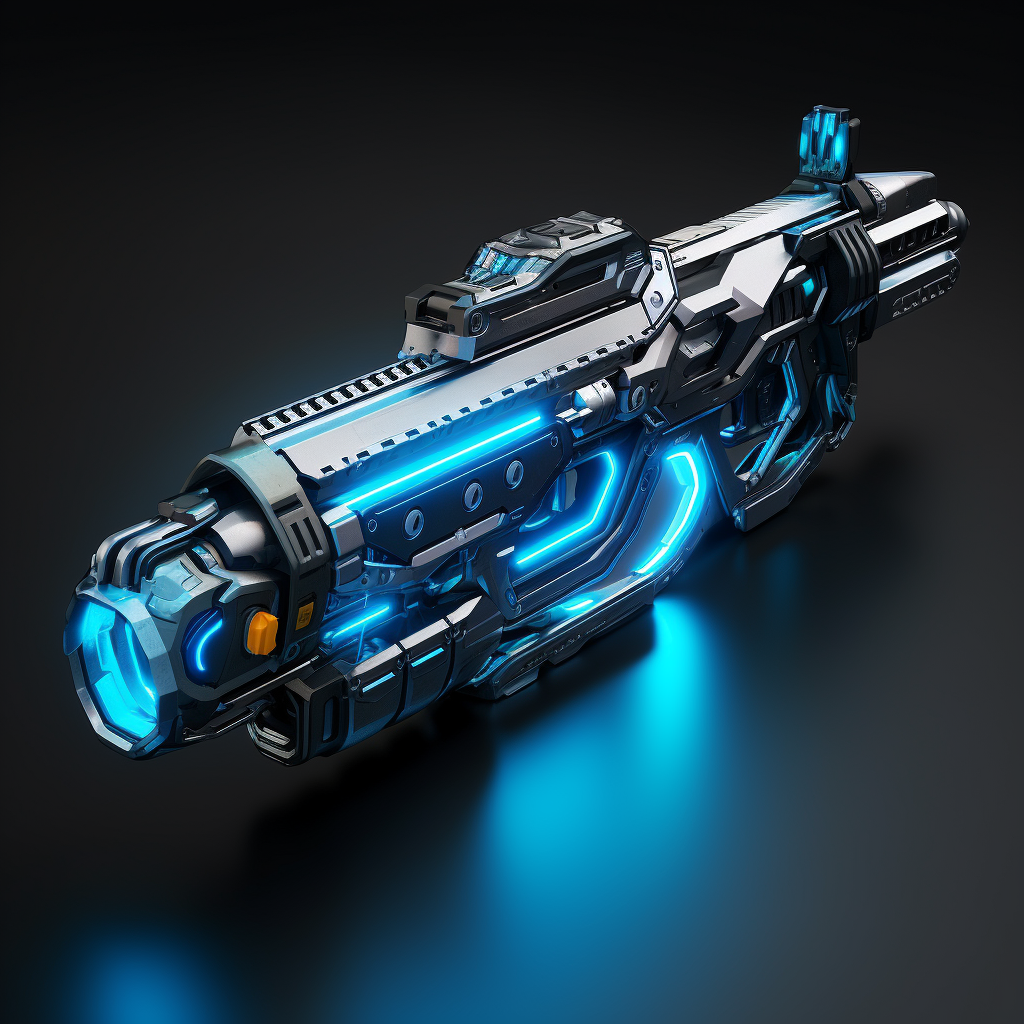
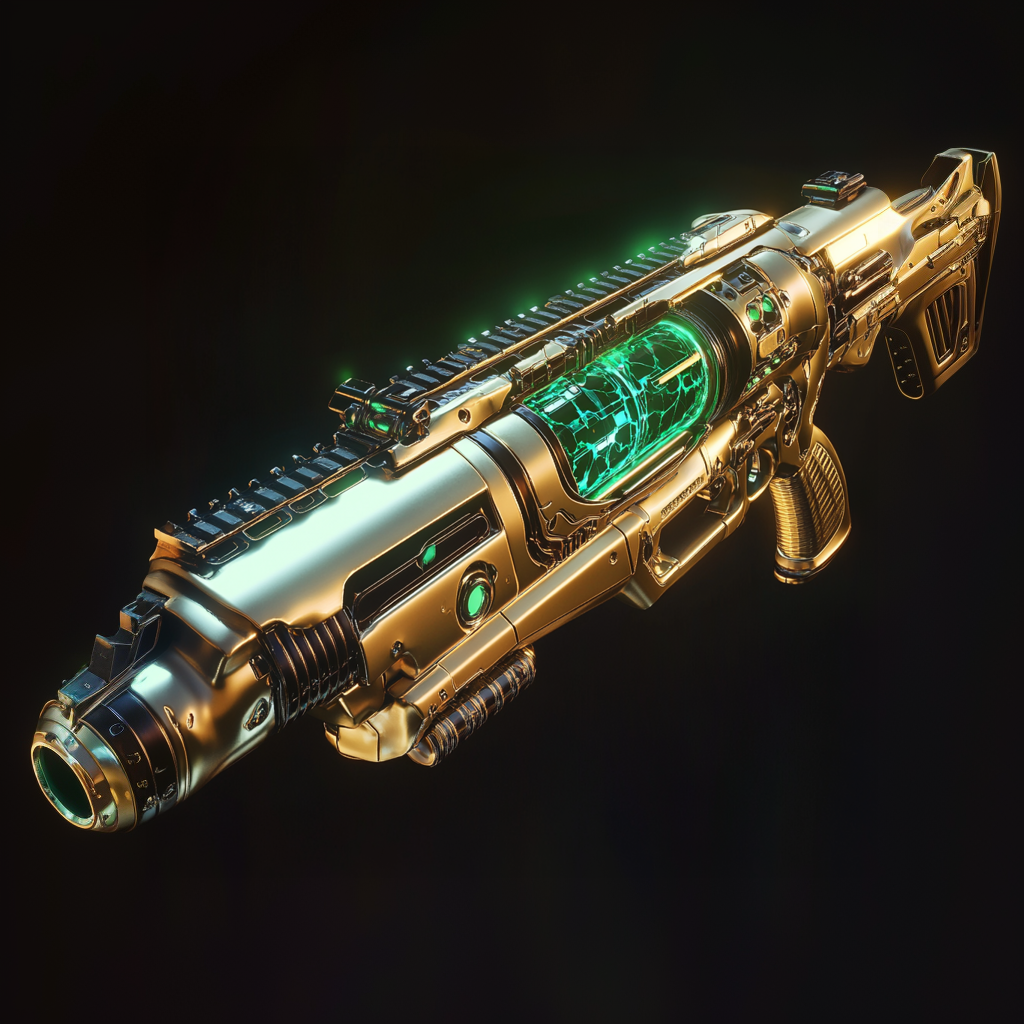

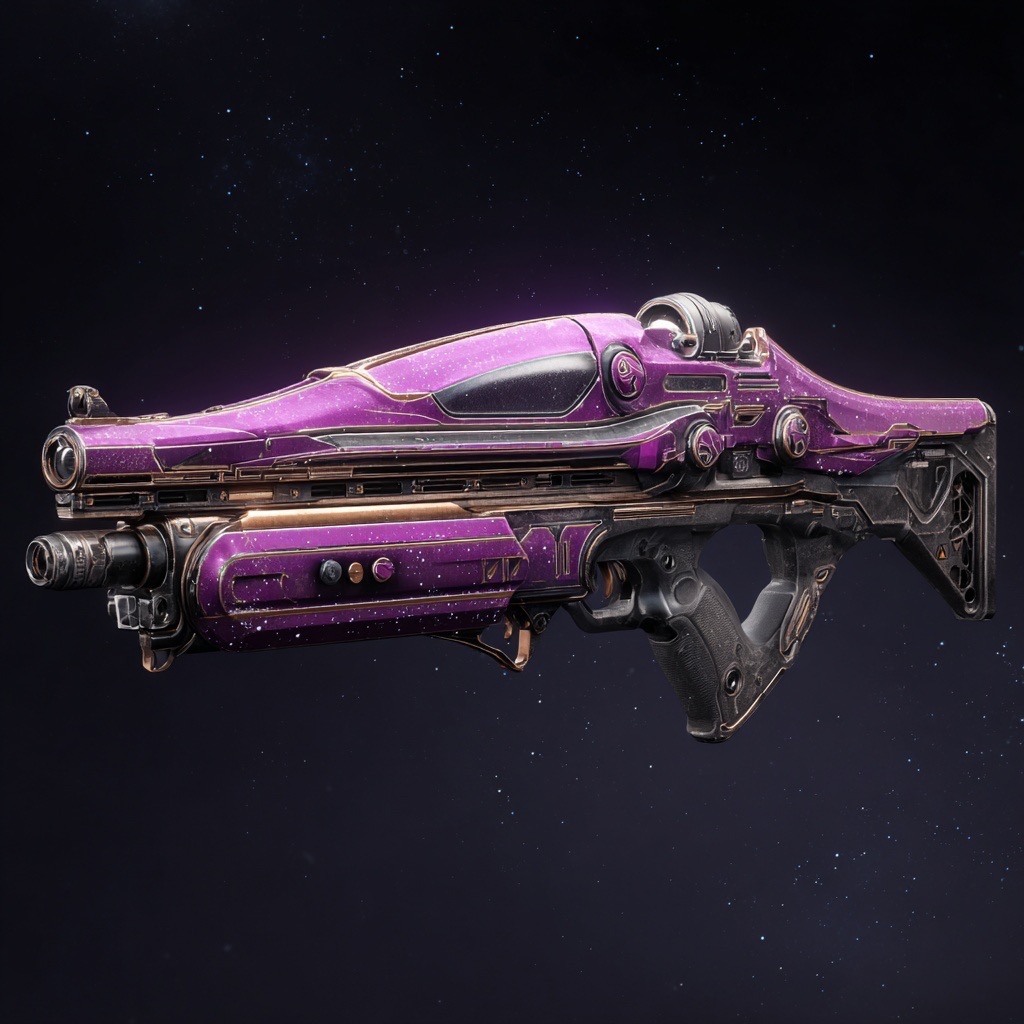
Rifles
Type 1: Gauss
The backbone of Terra Alliance ground forces, Gauss rifles represent the evolution of traditional ballistic weaponry into the atomic age. These electromagnetic accelerators propel ferromagnetic projectiles at devastating velocities, delivering consistent, reliable firepower that Alliance marines have come to depend upon across countless battlefields from the lunar surface to the ice plains of Europa.
Gauss technology excels in reliability—a weapon that fires when the trigger is pulled, regardless of environmental conditions or extended deployment. The standardized ammunition system ensures logistics remain straightforward, while the familiar magazine-fed operation allows for rapid reloading under fire. Alliance doctrine favors this predictability, viewing mechanical reliability as the foundation of tactical superiority. However, this approach comes with costs. Spent magazines and casings accumulate on battlefields, creating environmental concerns that have drawn criticism from ecological watchdog groups. The weight of ammunition also limits extended patrol capabilities, though most Alliance commanders consider this a reasonable trade-off for stopping power.
Type 2: Plasma
The Emerald Directorate’s answer to Alliance ballistics takes the form of directed energy weapons that superheat atmospheric gases into destructive plasma bolts. These rifles embody the Directorate’s commitment to sustainable warfare—no spent casings, no polluting projectiles, just pure energy channeled through advanced Helionite power cores. Plasma rifles offer significant advantages in extended operations. A single power cell can sustain hundreds of shots, eliminating the logistical burden of traditional ammunition.
Yet, Plasma Rifles run considerably hotter than ballistic weapons, requiring careful thermal management to prevent catastrophic overheating. The complex energy channeling systems, while elegant, introduce potential failure points that can leave soldiers weaponless at critical moments. Directorate training emphasizes disciplined fire control and proper maintenance — skills that separate veteran operators from those who find themselves holding expensive, non-functional equipment when it matters most.
Type 3: Anti-Gravity Bolt-Action Rifle (AGBAR)
While the great powers of the Inner Sol equip their armies with mass-produced Gauss and plasma weaponry, the Nordic Commonwealth’s people still prefer the elegant simplicity of bolt-action rifles—weapons that blend 19th-century mechanics with 23rd-century materials science. These bespoke firearms occupy a unique niche in the modern battlefield, favored by Nordlings, bounty hunters, and wealthy collectors who value craftsmanship over standardization.
The bolt mechanism itself has been thoroughly modernized while retaining its iconic operation. Quantum-assisted cycling ensures flawless function in zero gravity or extreme atmospheric conditions, while smart ammunition systems can switch between kinetic penetrators, explosive rounds, or even limited-yield plasma charges depending on the tactical situation.
These Nordic weapons demand their price in more than credits. Maintenance requires specialized knowledge and rare components. Ammunition, often custom-manufactured in small batches, costs exponentially more than standard military rounds.
Type 4: Entropy
In the hidden monasteries of Venus, Rakshasa weaponsmiths have achieved what conventional military science deemed impossible: the weaponization of entropy itself. These esoteric firearms represent the pinnacle of the sect’s fusion between ancient mysticism and quantum mechanics.
Unlike traditional weapons that deliver kinetic or thermal energy, Entropy Rifles fire concentrated fields of quantum instability that fundamentally alter the target’s molecular structure. The initial impact appears deceptively mild—a brief shimmer in the air, a momentary distortion—but within moments, the target’s cellular bonds begin unraveling at the subatomic level.
Production of these weapons remains limited to the sect’s most secretive facilities. The Rakshasa guards these secrets jealously, understanding that widespread entropy weaponization could destabilize the balance of power across the Seven Realms.
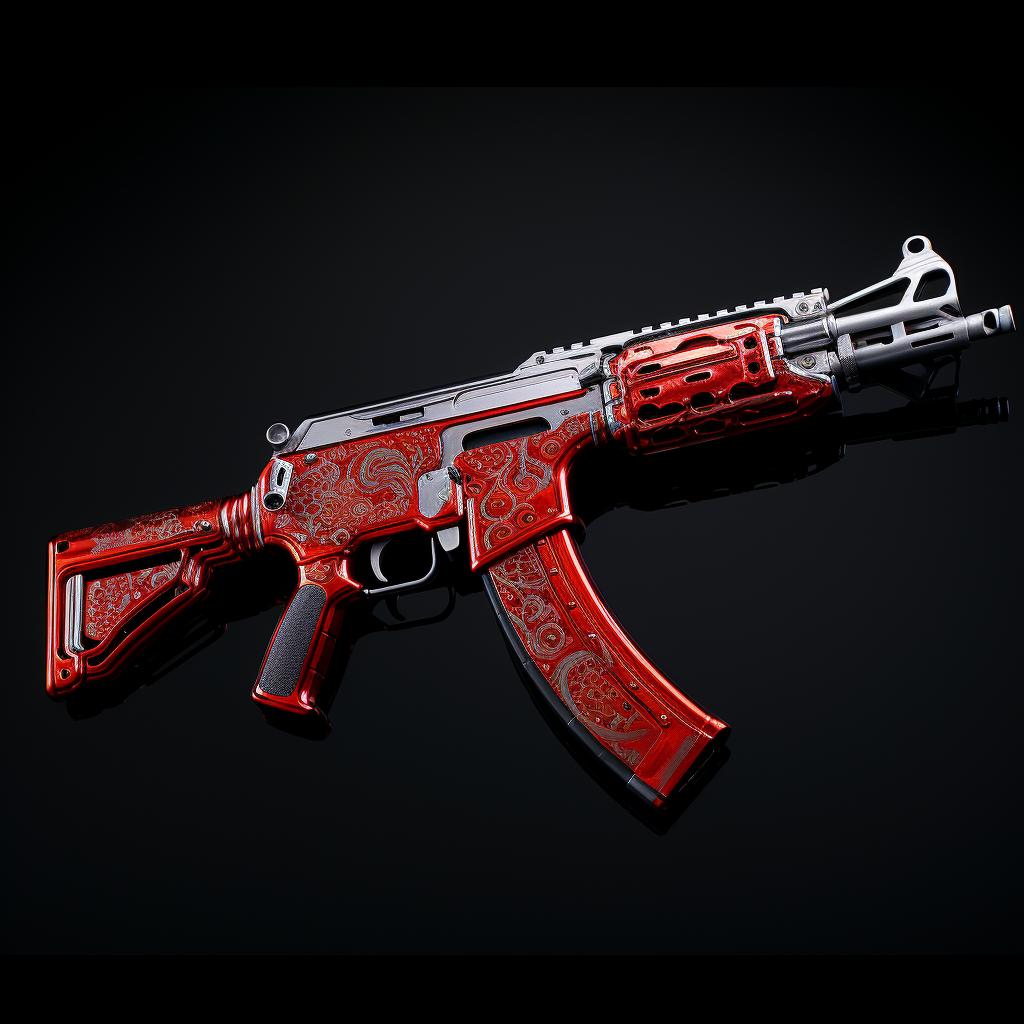
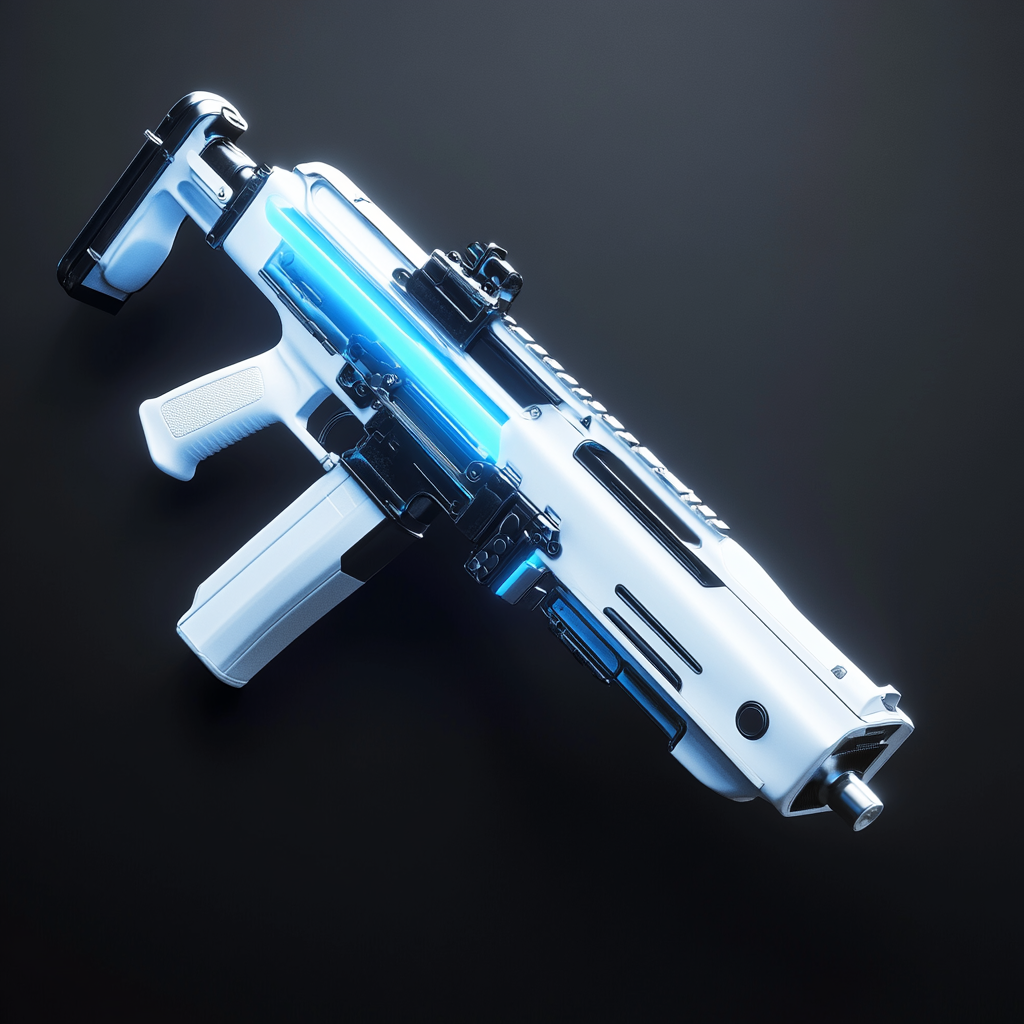
Submchine Guns (SMG)
Type 1: Phoenix SMG
The Imperium’s entry into the submachine gun category blurs the line between personal defense weapon and compact assault rifle. Built around the Imperium’s abundant reserves of Kunlun titanite—a dense, recoil-absorbing mineral found only in the mountains of Mainland China and Korea—these weapons prioritize control over portability.
This exceptional control comes at a cost. At nearly twice the weight of comparable weapons, the Imperial SMG demands significant upper body strength for extended use. The complex metallurgy and specialized components make field repairs nearly impossible without Imperial-trained technicians. Most critically, the weapon’s sophisticated mechanisms prove sensitive to extreme environmental conditions—a liability in the harsh environments of outer system operations. Imperial doctrine views this as an acceptable trade-off. Elite Bloodtroopers and Golden Serpent operatives value the weapon’s ability to place multiple rounds precisely on target, viewing weight as merely another test of warrior strength.
Type 2: Kinetic SMG
Where the Imperium built a precision instrument, the Alliance created a tool of pure pragmatism. Constructed primarily from advanced polymer composites and lightweight alloys, the Alliance SMG weighs less than most pistols while delivering devastating firepower through its kinetic acceleration system. The weapon’s modular design philosophy allows extensive customization—different barrels, stocks, and fire control systems can be swapped in minutes without tools. This adaptability has made it a favorite among mercenaries, special operations units, and anyone who values versatility over specialization. The low production cost means units can be manufactured in quantity and replaced rather than repaired when damaged.
However, this lightweight construction creates significant challenges. The kinetic acceleration system generates tremendous recoil forces that the polymer frame can barely contain. Sustained fire requires exceptional technique to maintain accuracy, and even experienced operators find themselves fighting the weapon rather than directing it. The plastic components, while remarkably durable under normal use, degrade rapidly under combat stress—most Alliance SMGs require complete replacement after 10,000 rounds or six months of active service.
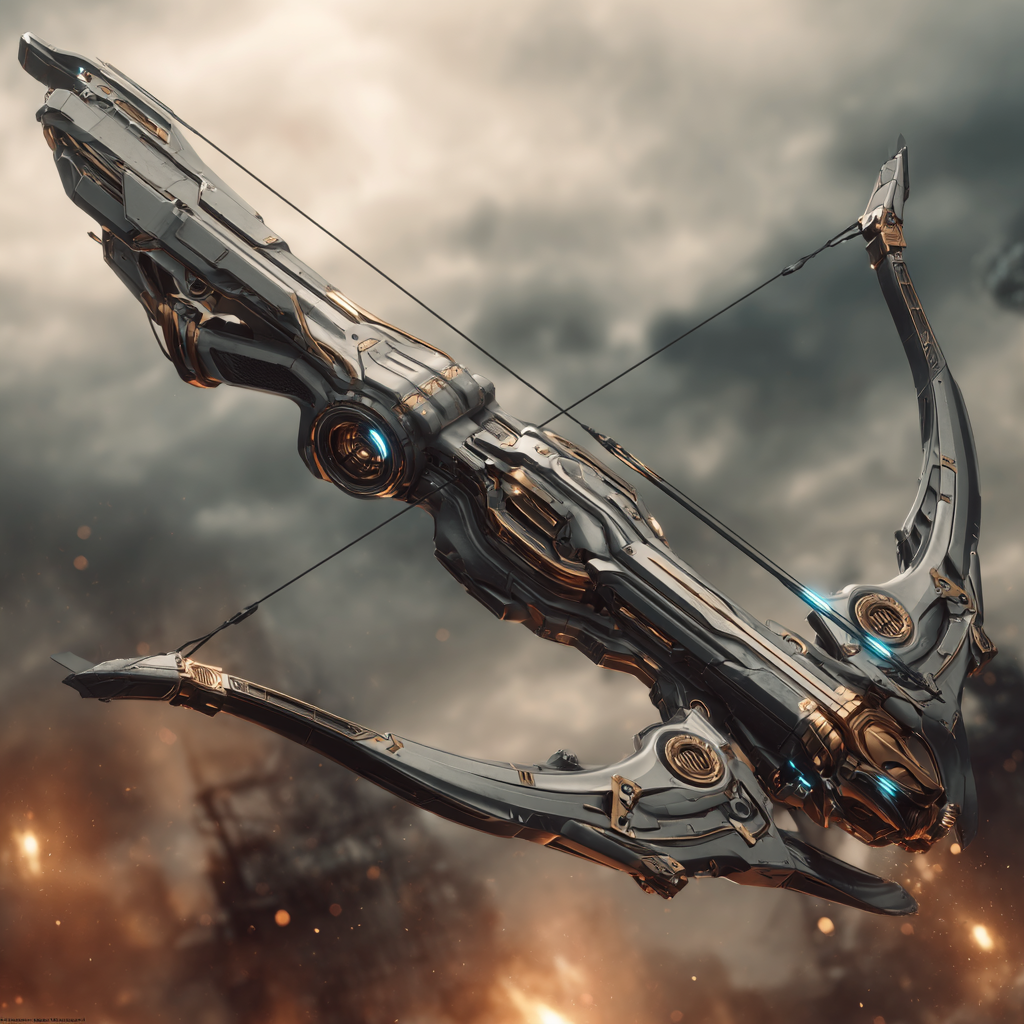

Archery
Type 1: Kinetic Crossbow
Originally popularized by Directorate Griots who needed reliable ranged options between songs, these weapons have found favor among bounty hunters and mercenaries who value consistency over flashiness. The magnetic acceleration system can propel bolts with enough force to penetrate modern armor while maintaining near-perfect accuracy at medium range.
The weapon’s greatest advantage is its independence from the user’s physical or psionic condition. Whether exhausted, wounded, or completely drained of Aether, a Kinetic Crossbow will fire when the trigger is pulled.
Modular designs allow for various bolt types—from explosive tips to tranquilizer rounds—making them versatile tools for hunters who never know what they’ll face. The weapon itself is remarkably light, and easy to learn. However, the reload time between shots makes it a poor choice for rapid engagements.
Type 2: Psi Bow
Born from the traditions of the Nordic Commonwealth and the Imperium of Dragons, Psi Bows are weapons that exist at the intersection of will and physics. These implements do not use regular ammunitions—instead, the archer draws back pure Aether energy, shaping it into arrows of concentrated psionic force: Lunar archers create gravity-distorting bolts, Solar practitioners fire healing or burning light, while Eclipse users unleash arrows of pure destruction.
The Psi Bow’s advantage lies in its limitless ammunition and scalable power. Yet this heavy weapon comes with critical weaknesses: without Aether, the bow is merely an expensive stick. Physical exhaustion, emotional turmoil, or psionic dampening fields can render the weapon useless. Most tellingly, each shot draws from the archer’s life force—extended battles can leave even experienced users drained to dangerous levels.
Melee
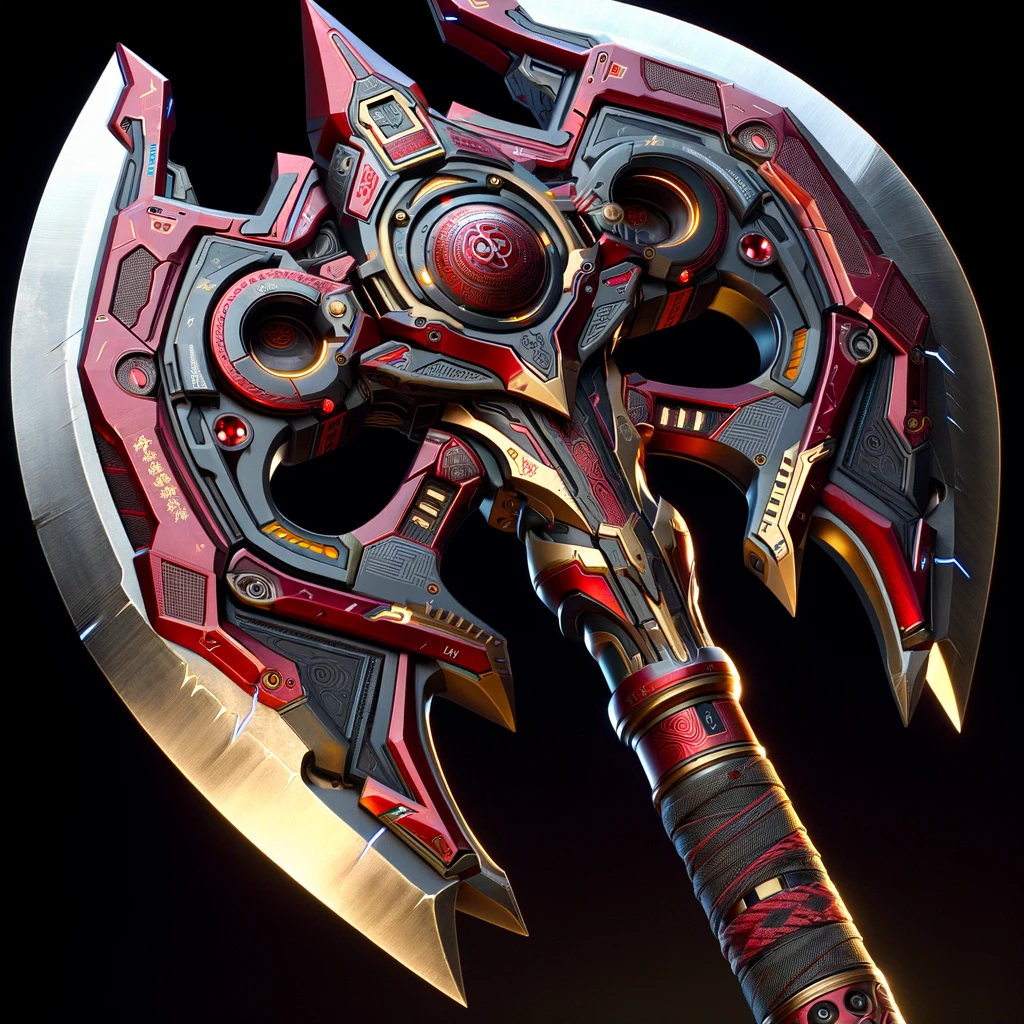
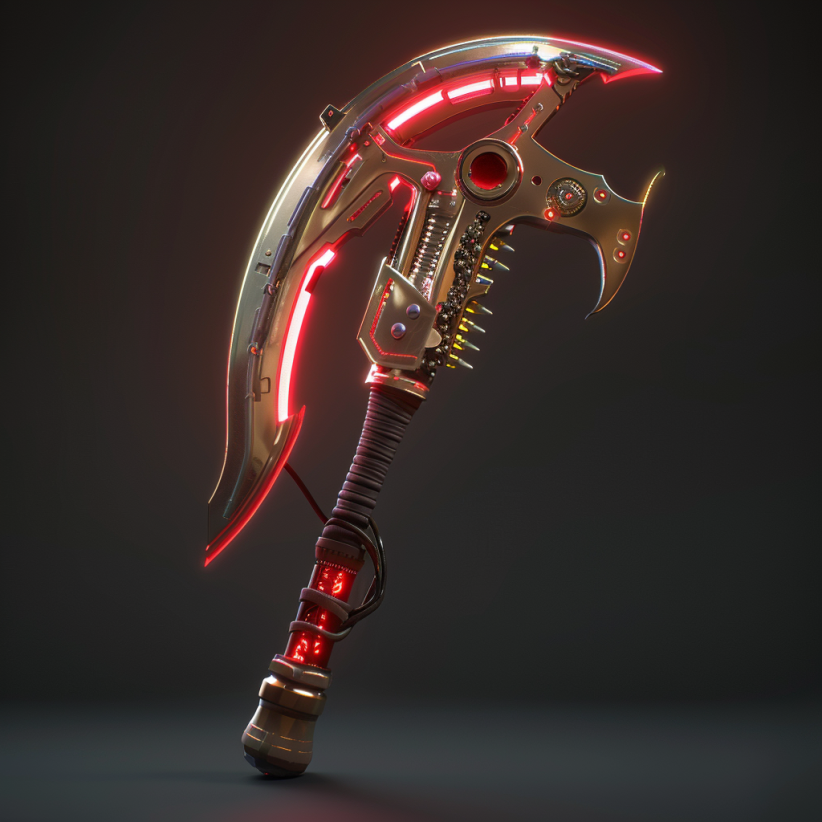
Thermal Battleaxe
The Thermal Battleaxe stands as the signature weapon of the Imperium’s Bloodtrooper forces, embodying Imperial engineering philosophy through devastating simplicity.
Two-Handed Standard
The primary Bloodtrooper variant utilizes a two-handed design optimized for maximum destructive potential. Forged from proprietary Imperial alloys that balance exceptional durability with surprising lightness, these axes generate tremendous momentum while remaining manageable in extended combat. The weapon’s thermal core can superheat the blade edge to temperatures exceeding 300 degrees Celsius, allowing it to slice through contemporary armor plating like heated wire through snow.
An integrated cooling system within the handle prevents thermal feedback to the wielder, enabling sustained combat without protective gear. This allows Bloodtroopers to maintain their aggressive fighting style throughout prolonged engagements.
One-Handed Elite
Originally designed for female Imperial officers who required more manageable weapons while maintaining full combat effectiveness, the one-handed Thermal Battleaxe has evolved beyond its initial purpose. These compact variants sacrifice some raw power for improved speed and versatility.
The reduced size allows for single-handed operation while maintaining the signature thermal capabilities that make the weapon family so feared. Elite agents prize these variants for their discretion—easier to conceal, faster to deploy, and capable of serving as both primary weapon and utility tool. Surprisingly, many male operatives have adopted the one-handed design, finding its balance and maneuverability superior for specialized missions requiring finesse over brute force.

Zephyrium Sword
The Zephyrium Longsword stands as the Zorian Covenant’s answer to humanity’s eternal struggle against the Radi-Mon threat. Against organic targets, Zephyrium blades perform devastatingly well. The mineral’s unique properties disrupt cellular regeneration at the molecular level, meaning wounds inflicted don’t heal as rapidly as normal Radi-Mon biology would allow.
However, the same properties that make these blades deadly against organic enemies render them nearly useless against inorganic targets. Vehicle armor, reinforced doors, even simple stone walls resist Zephyrium edges with frustrating effectiveness. The molecular disruption that devastates living tissue does nothing to metal alloys or mineral composites. Stalwarts learn quickly: Zephyrium is for monsters, not machines.

Titanium Shield
The Titanium Shields are manufactured primarily in the Covenant’s Jerusalem III and Warsaw forges, serve as the signature equipment of Stalwarts.
The shield’s layered construction excels at dissipating kinetic energy. Ballistic weapons—from primitive slug-throwers to modern gauss rifles. Against melee weapons, the shield performs admirably. Thermal axes, vibro-spears, and conventional blades struggle to penetrate the robust construction. Even Radi-Mon claws typically leave only superficial scoring. However, the Titanium Shield’s greatest weakness lies in its complete inability to defend against psionic attacks. Eclipse fire, Lunar gravity manipulation, and Mirage illusions pass through the physical barrier as if it weren’t there. The Covenant’s doctrine acknowledges this limitation openly: “Faith shields what metal cannot.”
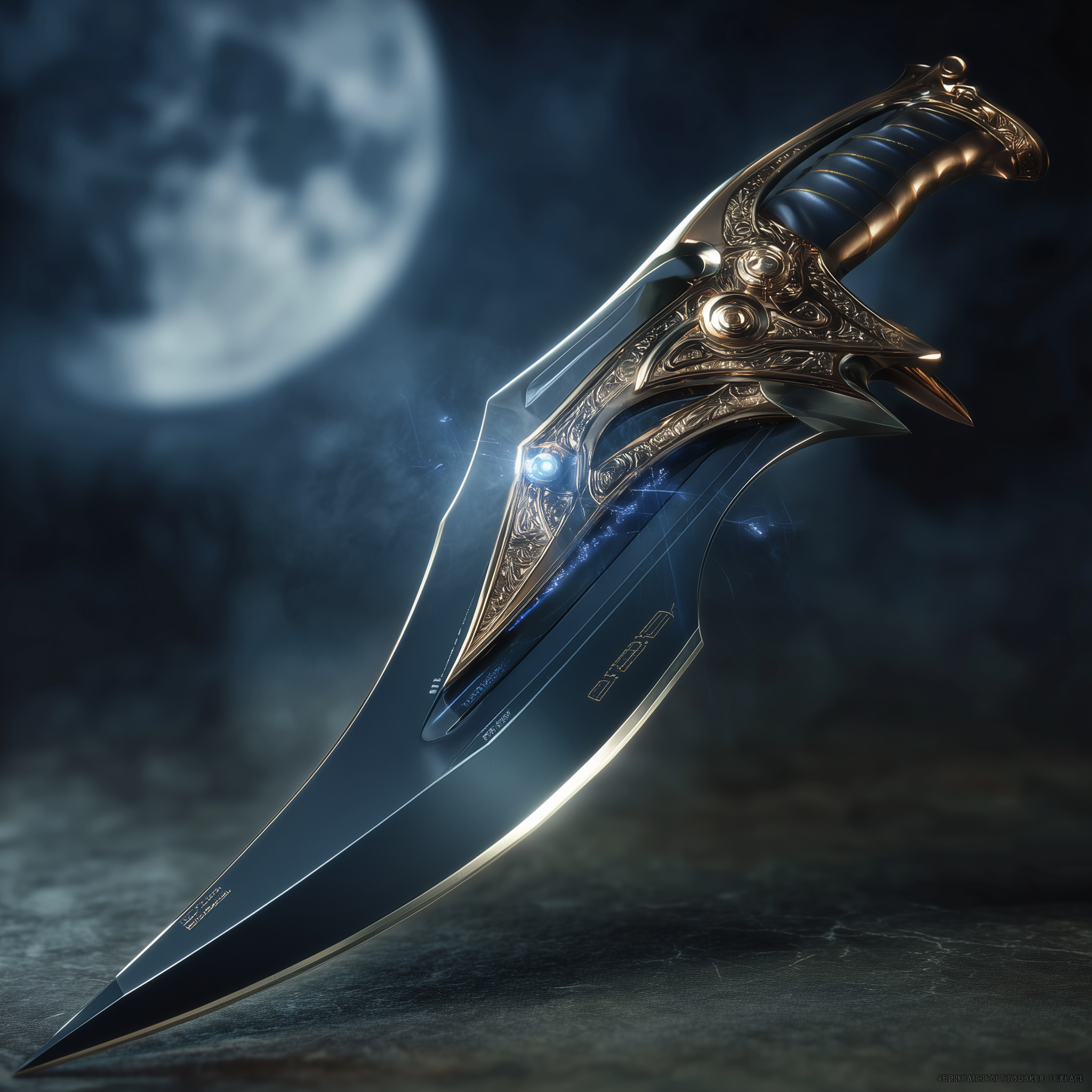
Moonstone Cutlass
A versatile single-handed blade that has become the weapon of choice for bounty hunters, mercenaries, and colonial militia across the Inner Sol. Originally designed by the Emerald Directorate as standard issue for their naval forces, these curved blades found widespread adoption due to their reliability and surprising effectiveness against both human and Radi-Mon targets.
The blade measures 75cm with a distinctive crescent curve, forged from lunar regolith worked into the metal during folding. This gives the blade its characteristic pearl-white shimmer and name. The weighted pommel contains a small battery that can be activated for limited energy enhancement—typically 3-5 powered strikes before needing recharge.
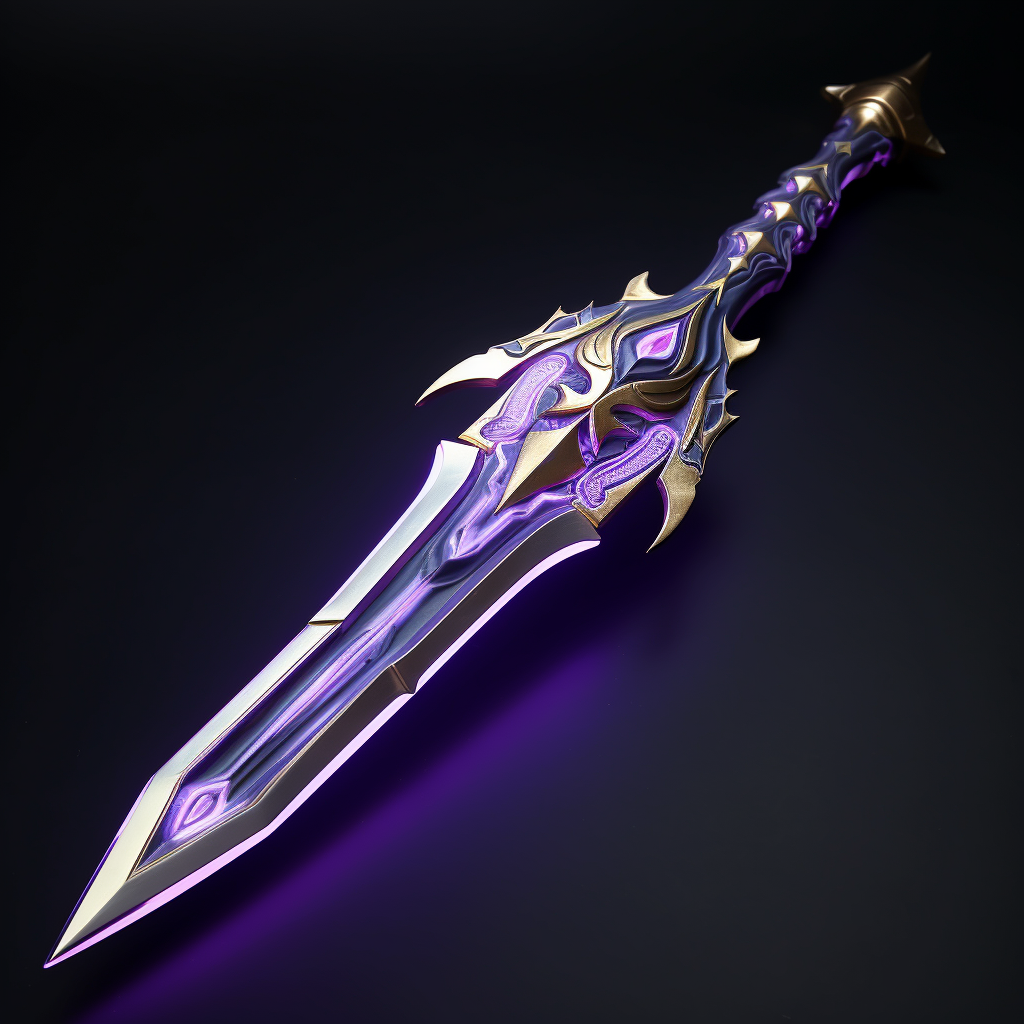
Soma Dagger
A weapon unique to the Rakshasa Horde and their allies, Soma Daggers are grown from specialized fungi and crystalline plants native to Proxima Centauri’s moon Shashan. The cultivation process requires the intended wielder’s bodily fluid. The “metal” is actually compressed chitin and bio-crystalline structures that harden into something stronger than conventional steel. Veins of bioluminescent tissue run through the blade, pulsing faintly with the wielder’s Aether.
To create it, a seed-crystal is planted in nutrient beds enriched with fusion waste. The cultivator must feed it three drops of semen or vaginal fluid weekly for three months as it grows. The blade needs no repair but will slowly degrade if separated from its bonded wielder for extended periods (weeks to months).
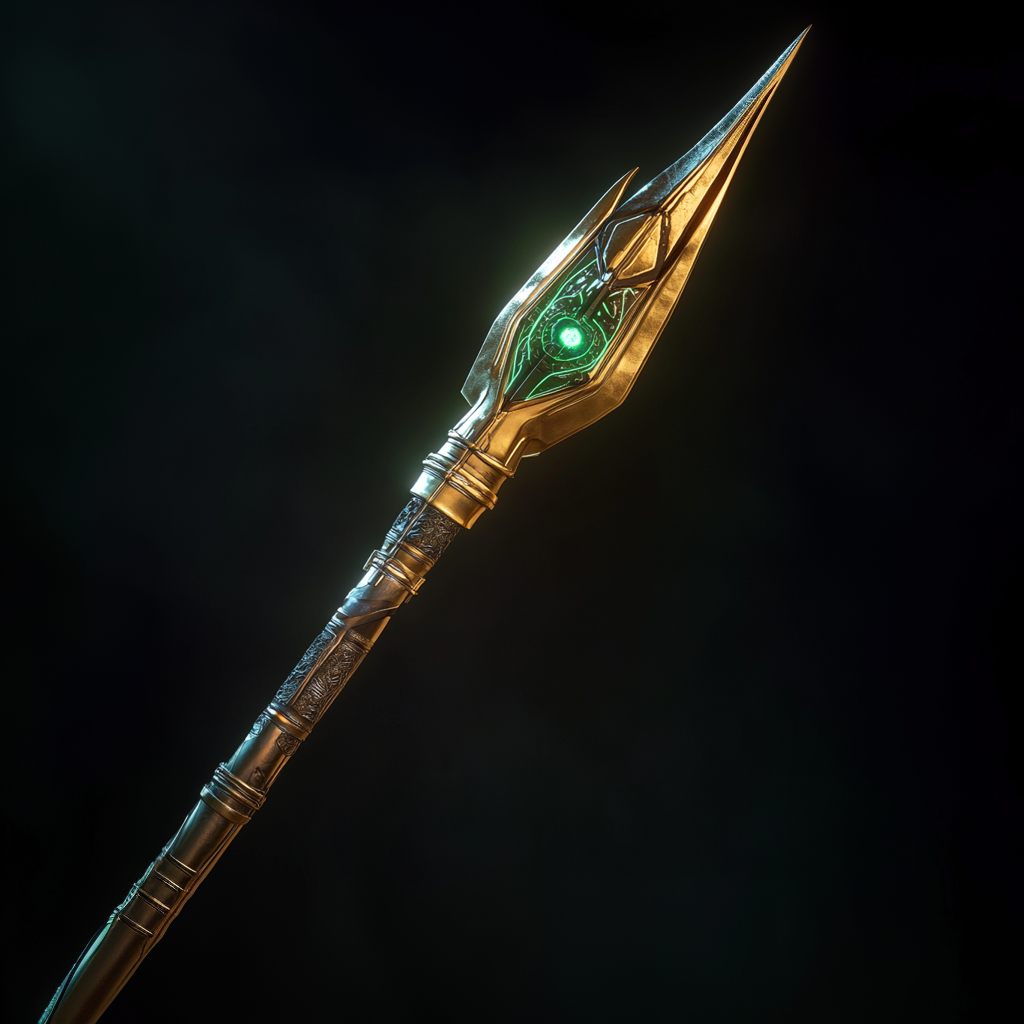
Vibro-Spear
The Vibro-Spear stands as the signature melee weapon of the Emerald Directorate’s ground forces. Each Vibro-Spear houses a vibrational core that generates low-frequency oscillations along the weapon’s blade. These vibrations exponentially amplify cutting force, allowing even glancing strikes to deliver crushing impact against heavily armored targets. The technology proves particularly effective against Radi-Mon carapaces and advanced military armor that would deflect conventional weapons. While slower than traditional melee weapons, each blow carries enough force to cleave through reinforced materials that would stop most other handheld weapons.
All Directorate Vibro-Spears incorporate psionic cores — surprisingly affordable components that unlock the weapon’s true potential in the right hands. Non-psionics experience no difference from standard operation, but psionic wielders can channel their abilities directly through the weapon, dramatically enhancing its destructive capability. This universal integration serves dual purposes: it maximizes the weapon’s effectiveness when wielded by Directorate Sumina casters, while allowing non-psionic soldiers to instantly transfer their weapons to psionic allies during combat emergencies.
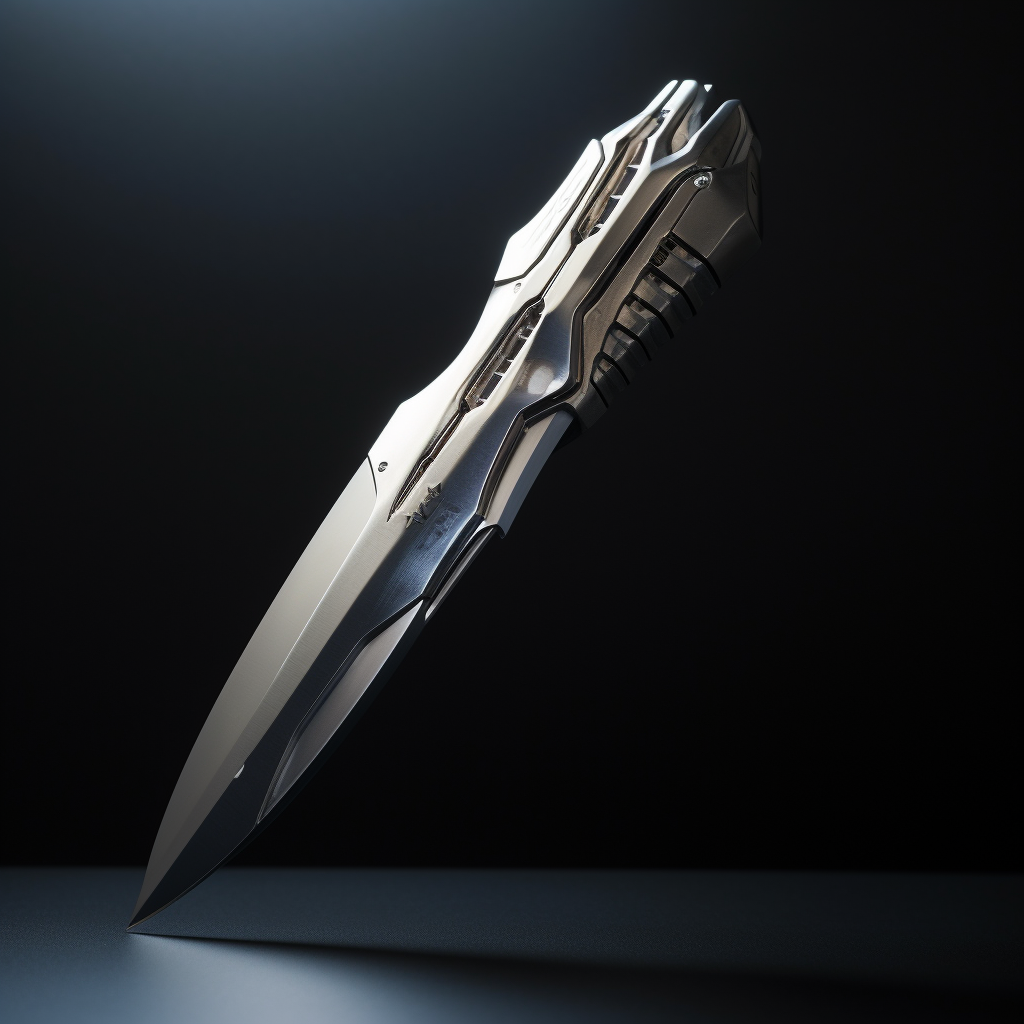
Thunderstrike Fist Blades
The Thunderstrike Fist Blade system represents the Zorian Covenant’s commitment to giving their zealots and heroes decisive close-quarters advantages. Vorons deploy Thunderstrike systems mounted to their wrist armor’s forearm assemblies. The blades extend and retract through electromagnetic actuators powered by their hidden combat suit’s primary battery, ensuring reliable operation in vacuum or hostile atmospheres. Titanium steel construction provides exceptional durability while maintaining a razor edge capable of penetrating most contemporary armor systems.
The electrification feature draws directly from the user’s Aether reserves, coating the blades in lethal electrical discharge. This enhancement proves devastatingly effective against both organic targets and electronic systems, though prolonged use risks depleting Aether during extended engagements. Cybernetic variants can sustain electrification longer than armor-mounted systems, though users would have to balance offensive capability against the risk of total limb shutdown.
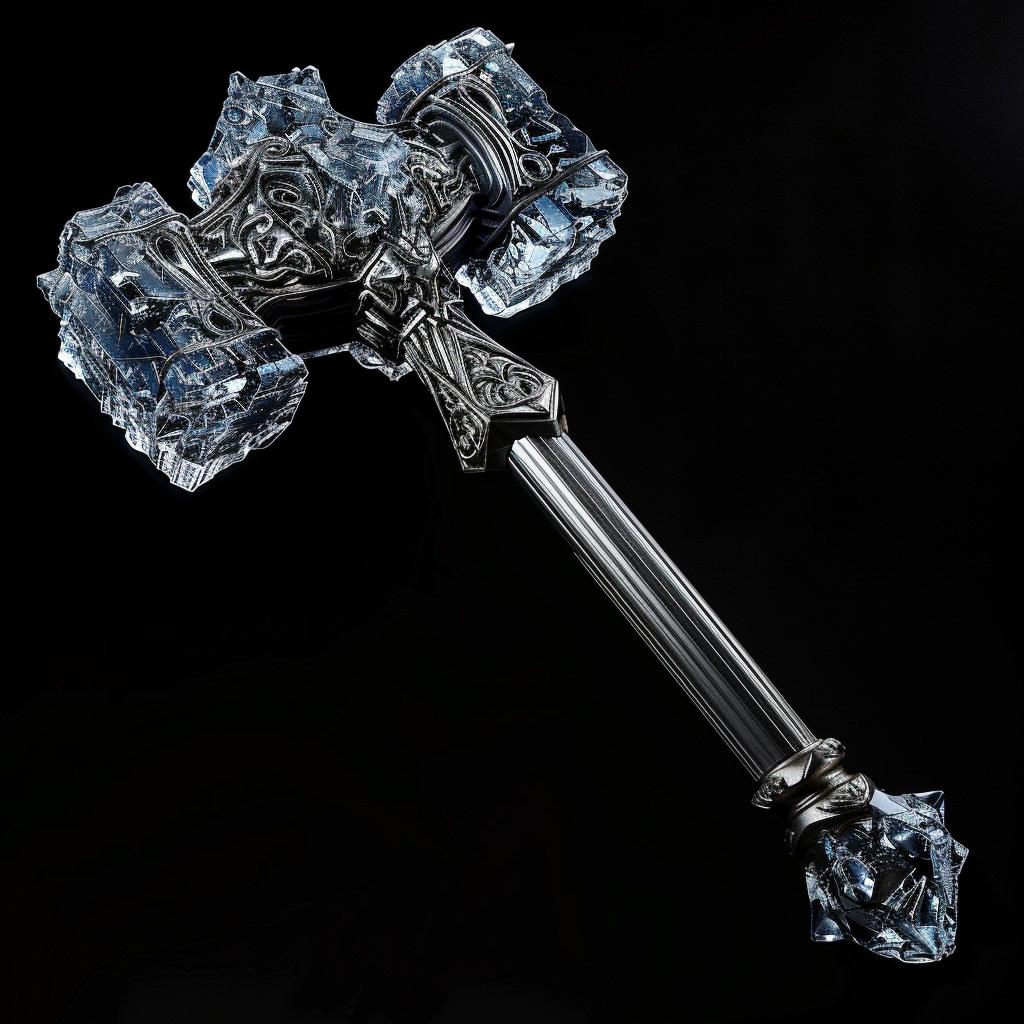
Glacial Hammer
A Nordling weapon forged from the primordial ice deep beneath Europa’s frozen crust, Glacial Hammers represent one of the Nordic Commonwealth’s oldest martial traditions. These warhammers are available in one-handed or two-handed forms, and are crafted from crystallized moon water—ice compressed under such extreme pressure over millennia that its molecular structure transforms into something harder than steel yet retains the ancient cold of Europa’s sunless depths.
The weapon’s signature ability manifests when sufficient force is applied: targets frozen by repeated strikes become brittle enough to shatter completely if damaged further, leaving no remains except frost-covered fragments. This has made Glacial Hammers particularly effective against Radi-Mon hordes, whose regenerative abilities mean nothing when their biomass is scattered as frozen debris.
Before the Fenris outbreak, Glacial Hammers served as ceremonial weapons carried by the Nordic Commonwealth’s elite honor guard. The tradition held that only those who had “earned the cold”—survived extended deployment in Europa’s sub-ice colonies—could wield these weapons without disrespecting their ancestors. Each hammer was named after a fallen hero, their deeds inscribed in Jǫturmál along the haft.


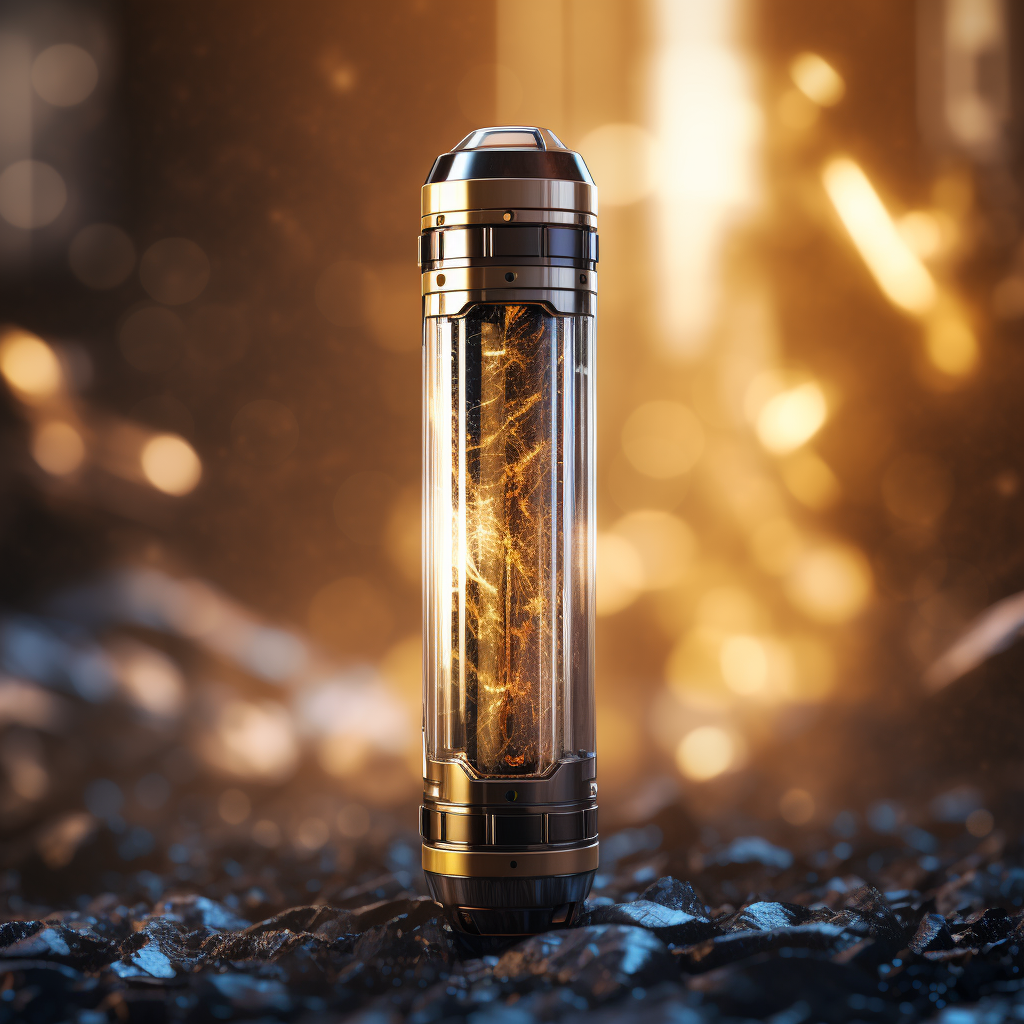
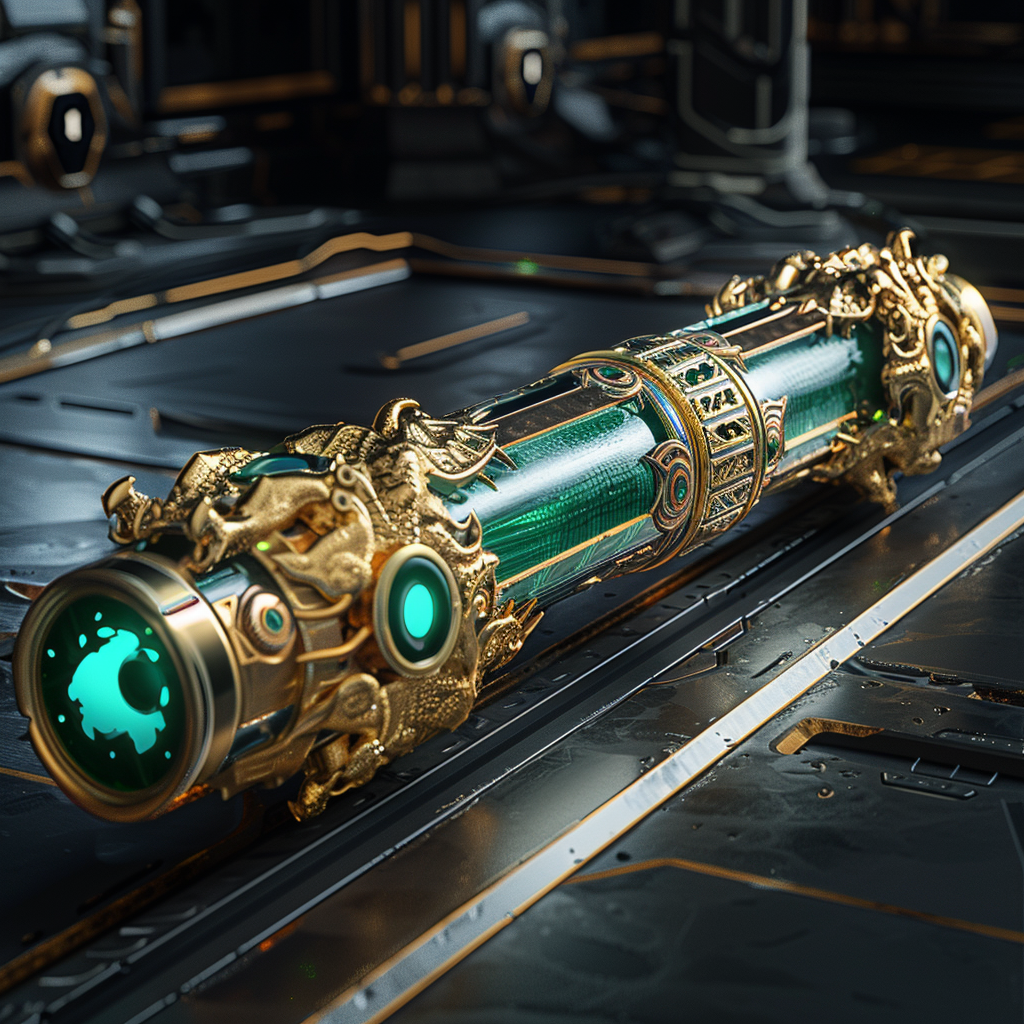
Psytum Sword (靈瞳劍)
Considered the most powerful weapon available to humans, the Psytum Sword is a sophisticated melee weapon that becomes a dazzling reality when activated, harnessing psionic energy through the unique interplay of human DNA and quantum mechanics. This advanced weapon requires its wielder to be psionic, a crystalline DNA sequence within the nucleus of cells in psionic individuals, which enables the channeling of atomic energies into tangible psionic abilities.
The term “Psytum” is a fusion of “Psyche” and “Quantum”, highlighting the weapon’s reliance on quantum mechanics. The Psytum Sword operates by tapping into the quantum states of the wielder’s psyche, allowing for the stabilization and projection of a coherent energy blade. This quantum interaction, sustained by the wielder’s heartbeat, is what sets the Psytum Sword apart, enabling it to maintain a consistent and powerful laser blade without the need for an external power source.
Despite being a melee weapon, the Psytum Sword is highly versatile with a significant ceiling for destructive power. The nature of the sword’s energy blade is influenced by the wielder’s emotions:
Aggressive and Turbulent Emotions: Amplify the sword’s destructive power, making the energy blade more volatile and capable of devastating attacks that can cleave through the toughest armors. However, this volatility risks collateral damage, and in extreme cases, can cause splash damage to the user themselves.
Serene and Calm Emotions: Imbue the sword with a crystalline, razor-sharp energy blade, enhancing precision and allowing for graceful, fluid movements. This state is ideal for precise strikes and controlled combat, minimizing the risk of unintended damage.
Utility
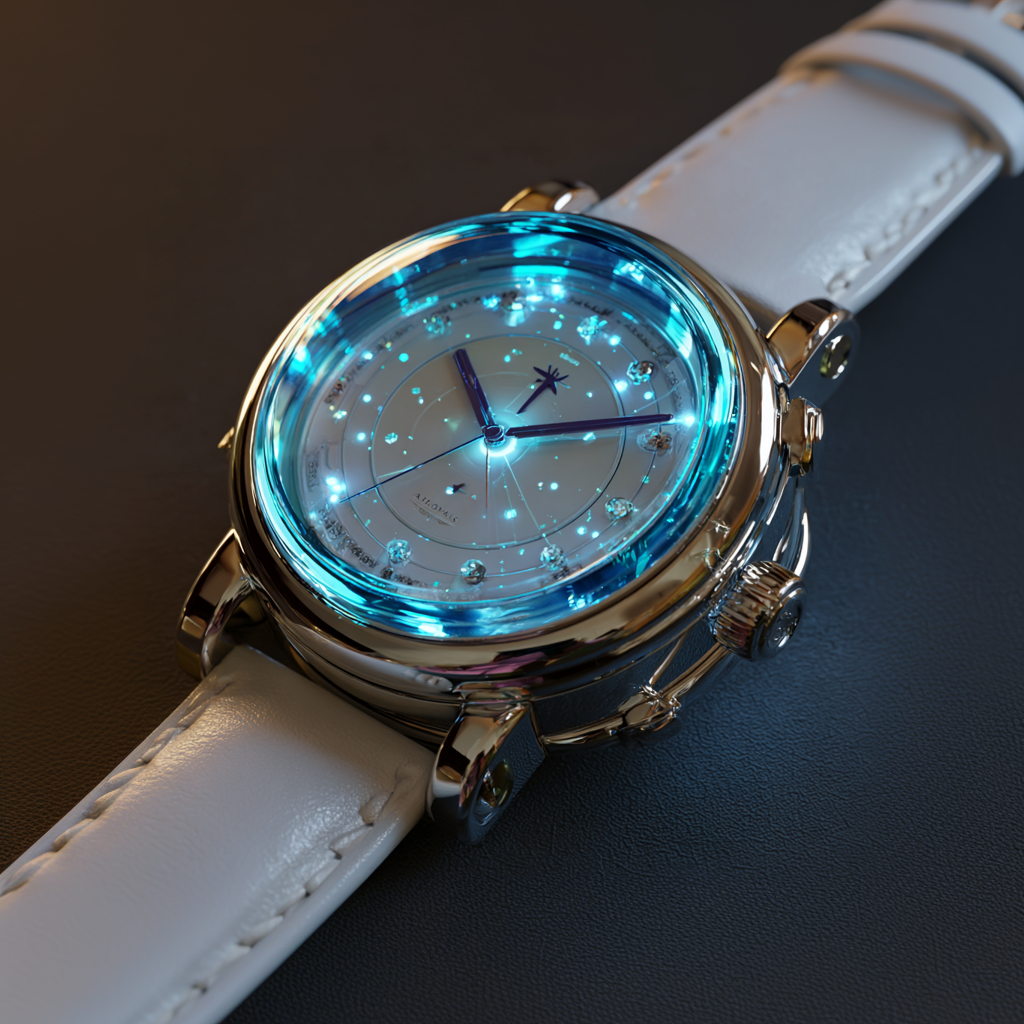
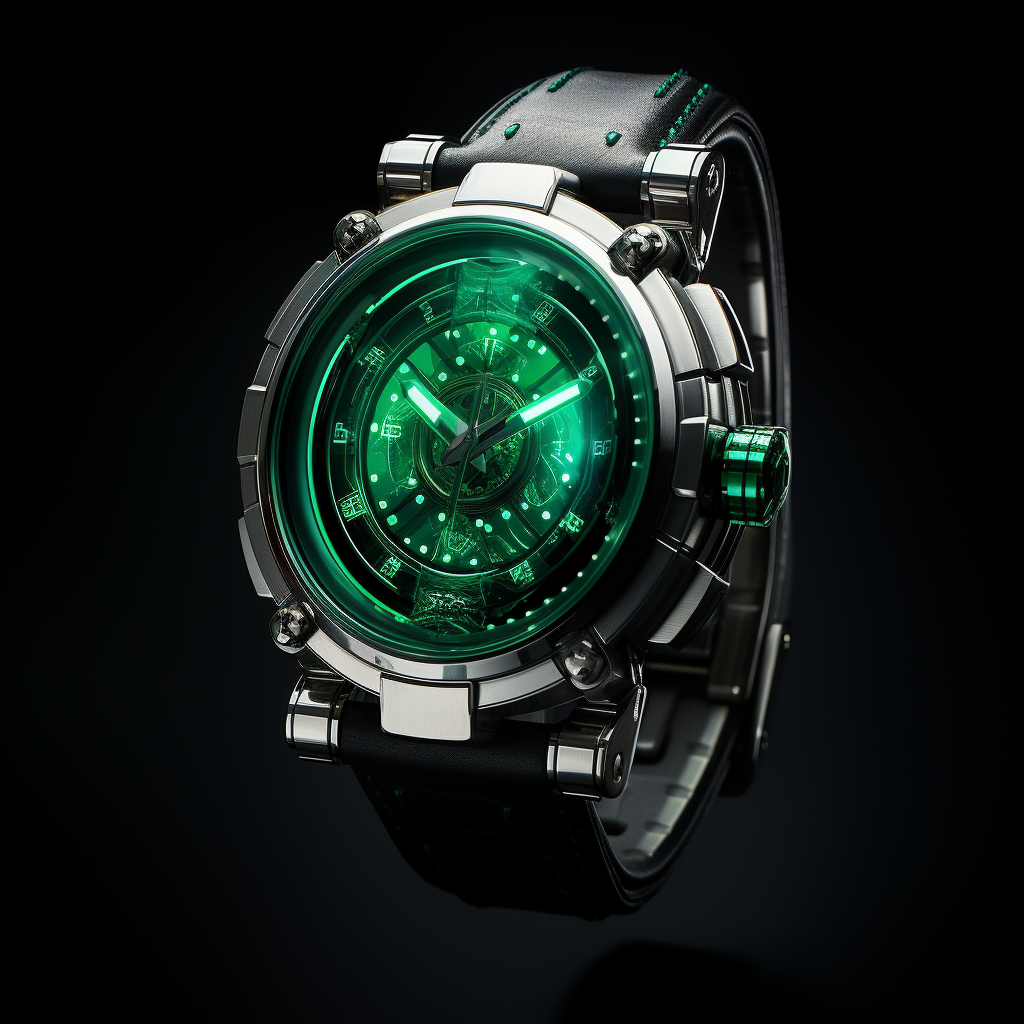
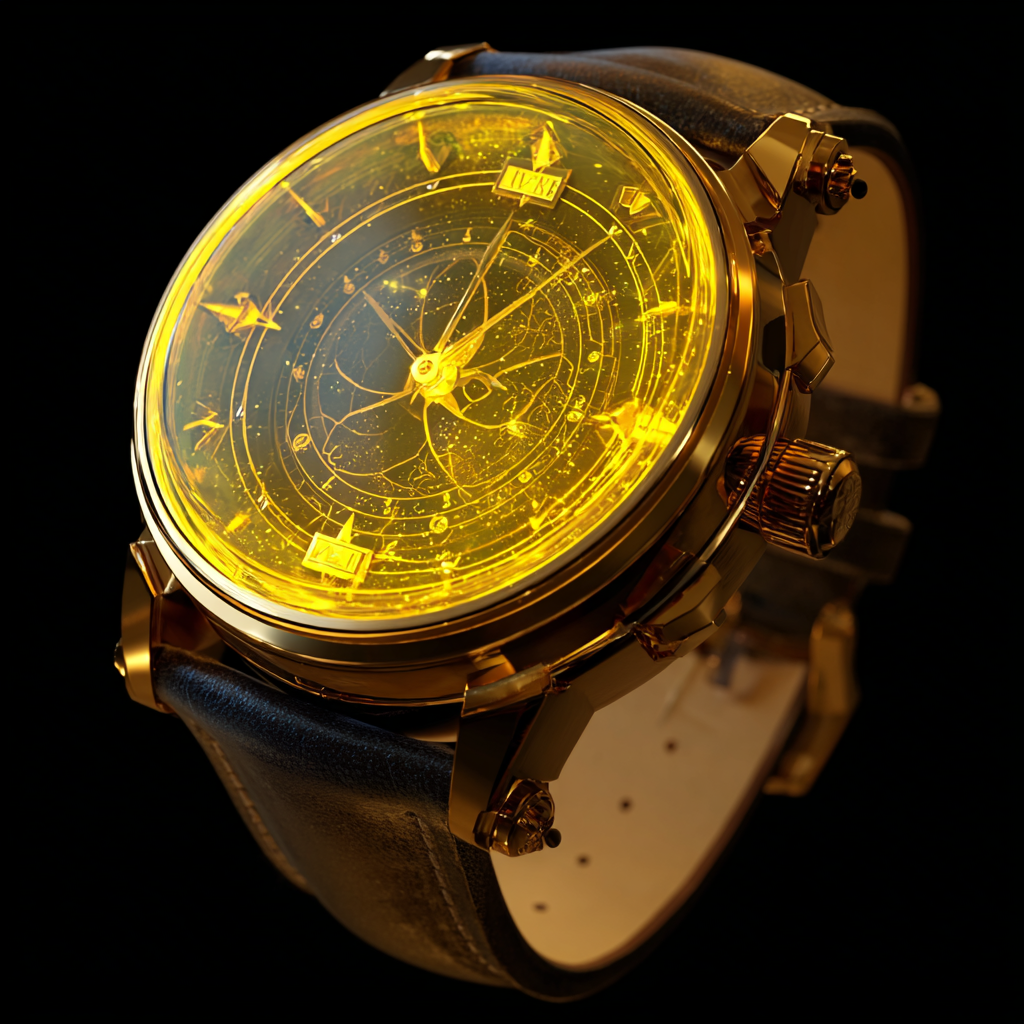
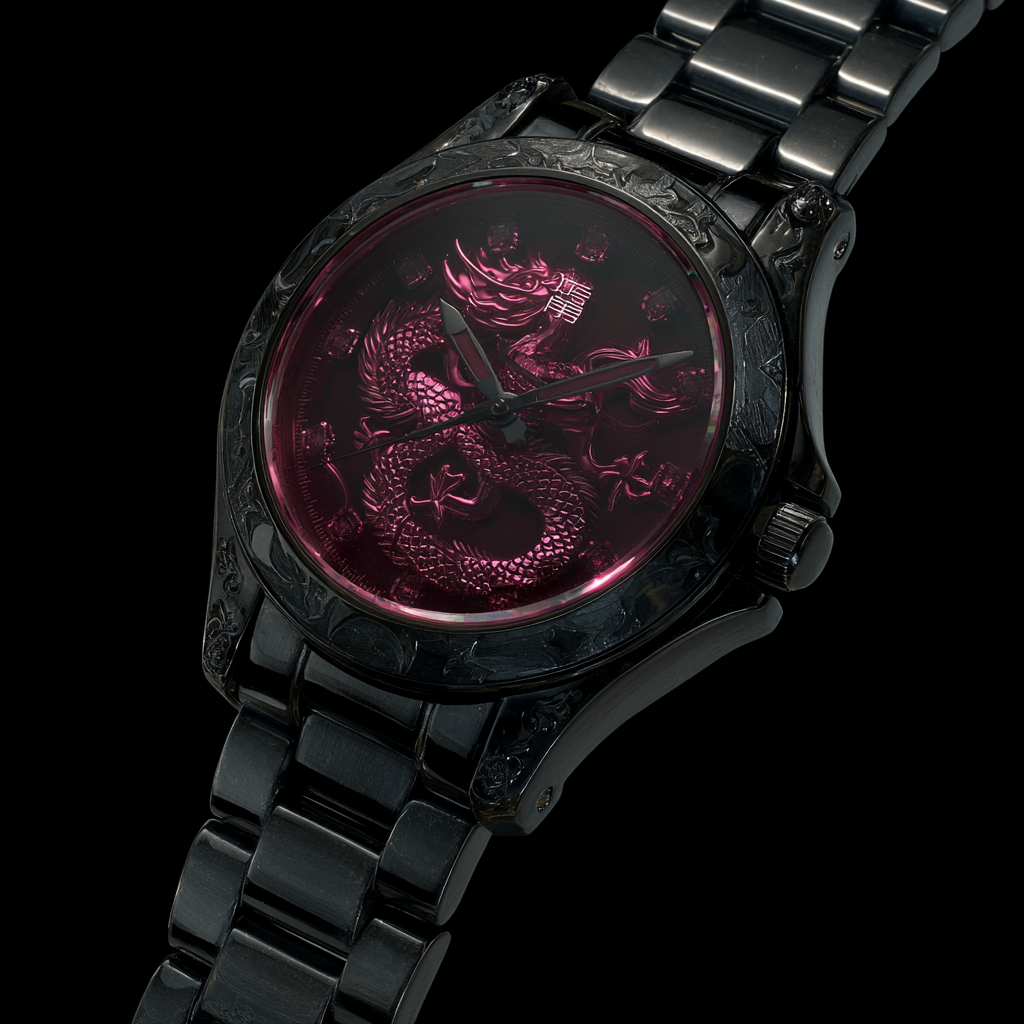
Nucleus Watch
The Nucleus Watch operates at near-absolute-zero temperatures, allowing it to perform billions of operations per second. A Nucleus Watch utilizes a quantum field to sync with the user’s neural activity, effectively aligning their current mental state with a past one. Can only access memories that occurred while wearing the Nucleus Watch.
Quantum Immersion: Allows the user to recall and “relive” specific memories or past experiences while wearing the watch.Drains the fusion battery at a rate of 0.166% per second. Maximum duration of 600 seconds (10 minutes) per activation before needing a recharge.Uses: Relive cherished memories, aiding in emotional well-being but risking emotional dependency; Revisit instructional/learning experiences, allowing for personal improvement and skill mastery.
Mobile Hacking Interface: This feature lets the user connect to any fusion-powered device they have console access to. Attempting to hack or injecting shell scripts requires additional Quantum Processing Units (QPUs). The Atomic Accord has not disclosed why this feature is often misused to illicitly download interactive holographic pornography from the Extranet.
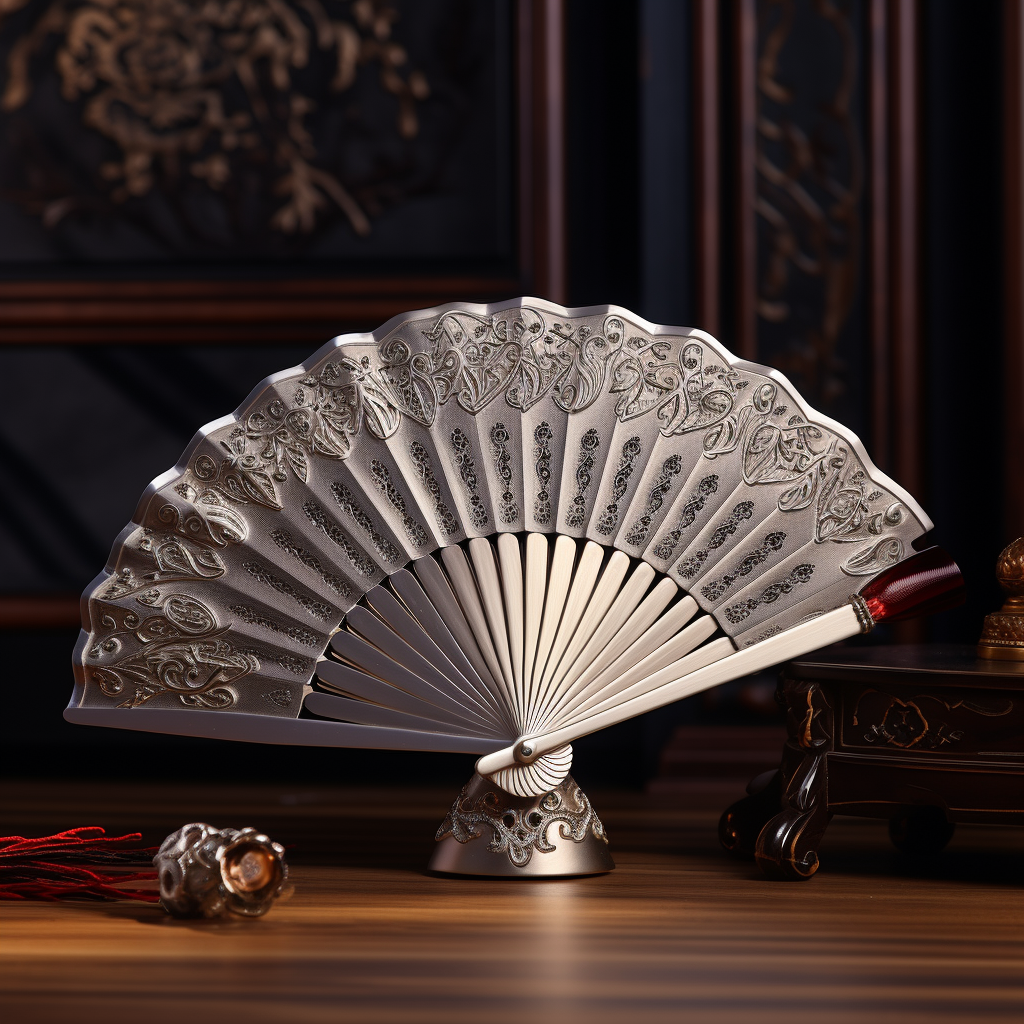
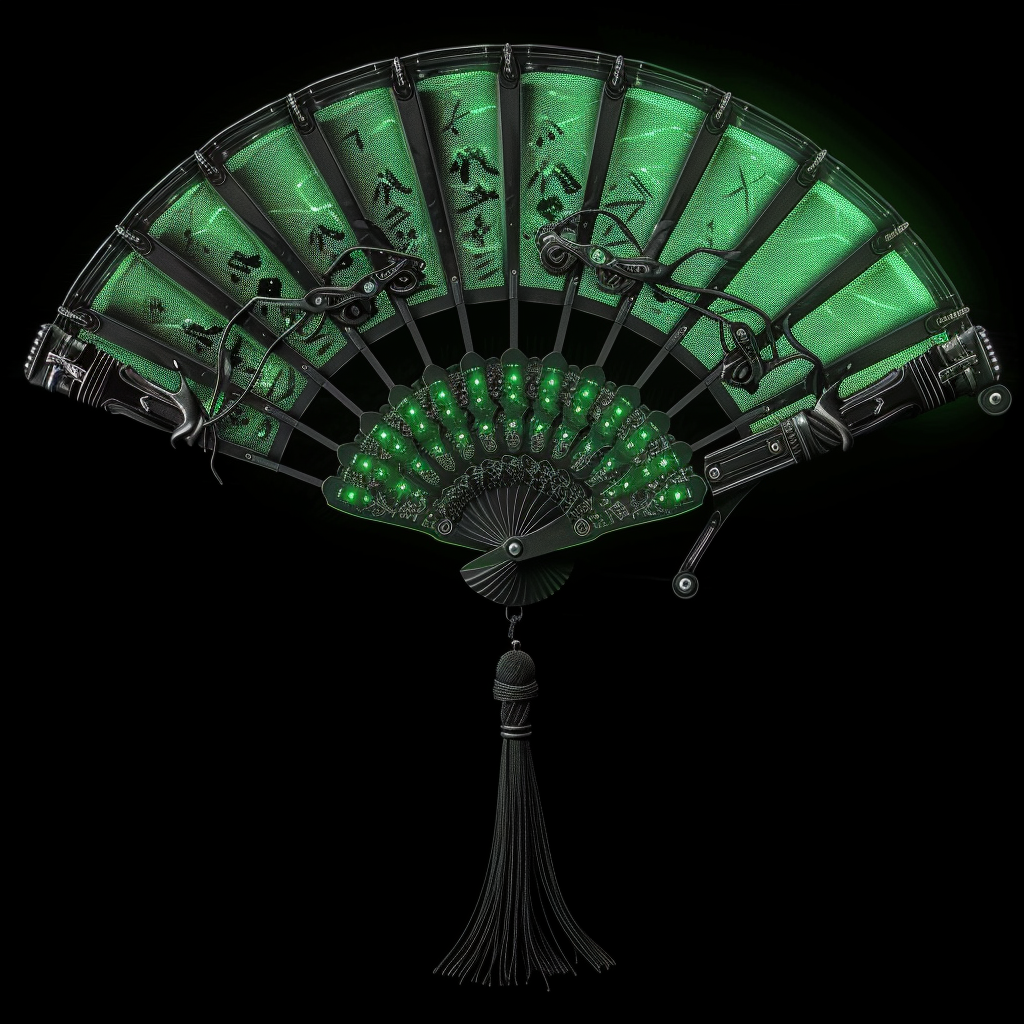
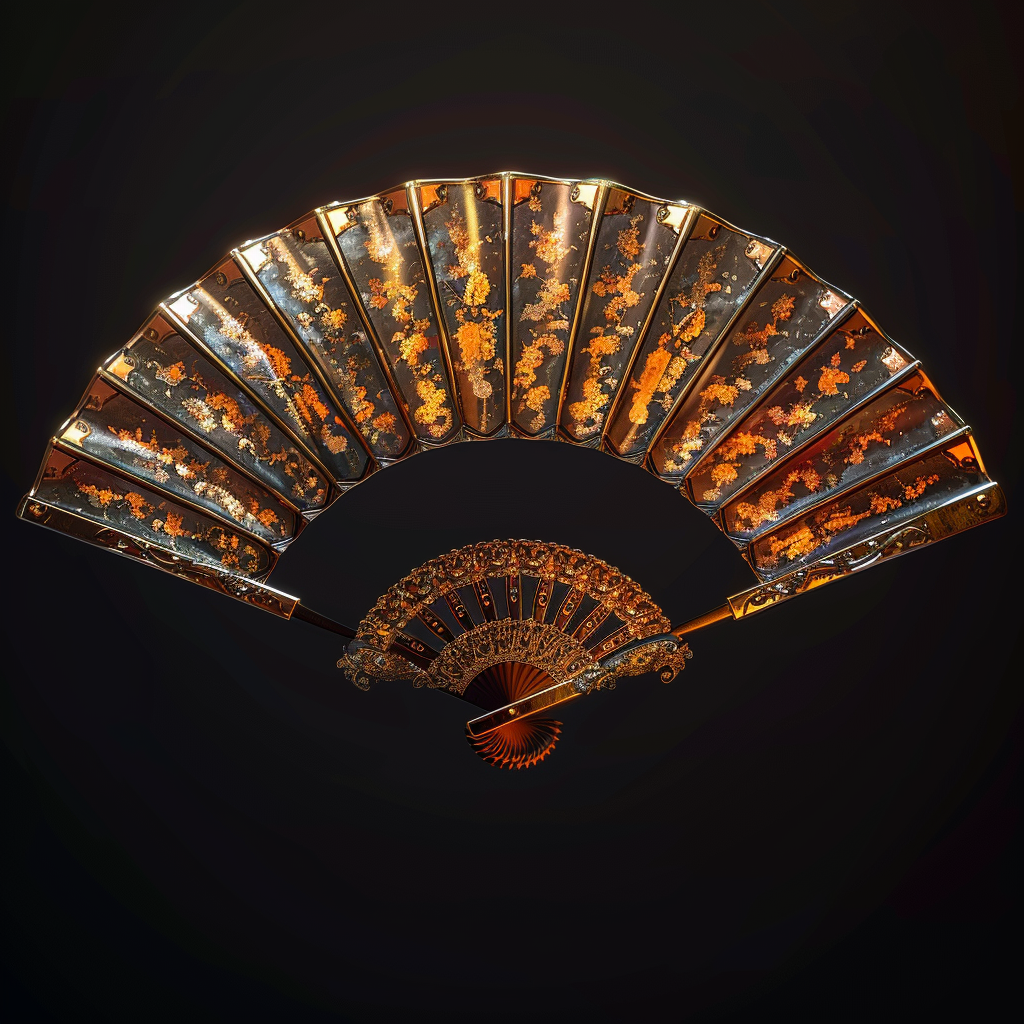
Psi Fan (靈扇)
Originating in the Celestial Kingdom of Choson (a vassal to the Imperium of Dragons), each Psi Fan is a masterwork of engineering and artistry. Constructed from rare materials found only in the Korean Peninsula and Mainland China—including the legendary Kunlun silverites—these weapons command prices that exceed most soldiers’ lifetime earnings. The fan’s delicate appearance masks its lethal purpose. When folded, it resembles nothing more than an elegant accessory befitting Imperial nobility. Unfolded, it reveals intricate psionic circuitry woven between its panels, creating a conduit capable of amplifying even moderate psionic abilities into formidable offensive power.
The rise of the Rakshasa has fundamentally challenged Imperial dominance over Psi Fan technology. Founded by exiles and dissidents from Taiwan, Tibet, and Xinjiang—regions either directly controlled by or forcibly annexed into the Imperium—the Rakshasa brought with them intimate knowledge of traditional fan-crafting techniques and deep resentment toward their former oppressors.
Psionic Amplification: The Psi Fan’s primary function transforms its wielder into a battlefield force multiplier. The weapon’s embedded psionic amplifiers can boost spell potency by several orders of magnitude, allowing even novice practitioners to cast with the destructive potential of master psions. This democratization of psionic warfare has fundamentally altered Imperial military doctrine.
Defense with Style: Beyond offensive capabilities, the fan serves as an elegant defensive tool. A skilled operator can manifest ethereal energy barriers capable of deflecting bullets, absorbing energy-based attacks, and even parrying strikes from advanced melee weapons like Psytum Swords and Thermal Axes. The fan’s defensive matrix adapts to incoming threats, making it equally effective against kinetic and energy-based assaults.

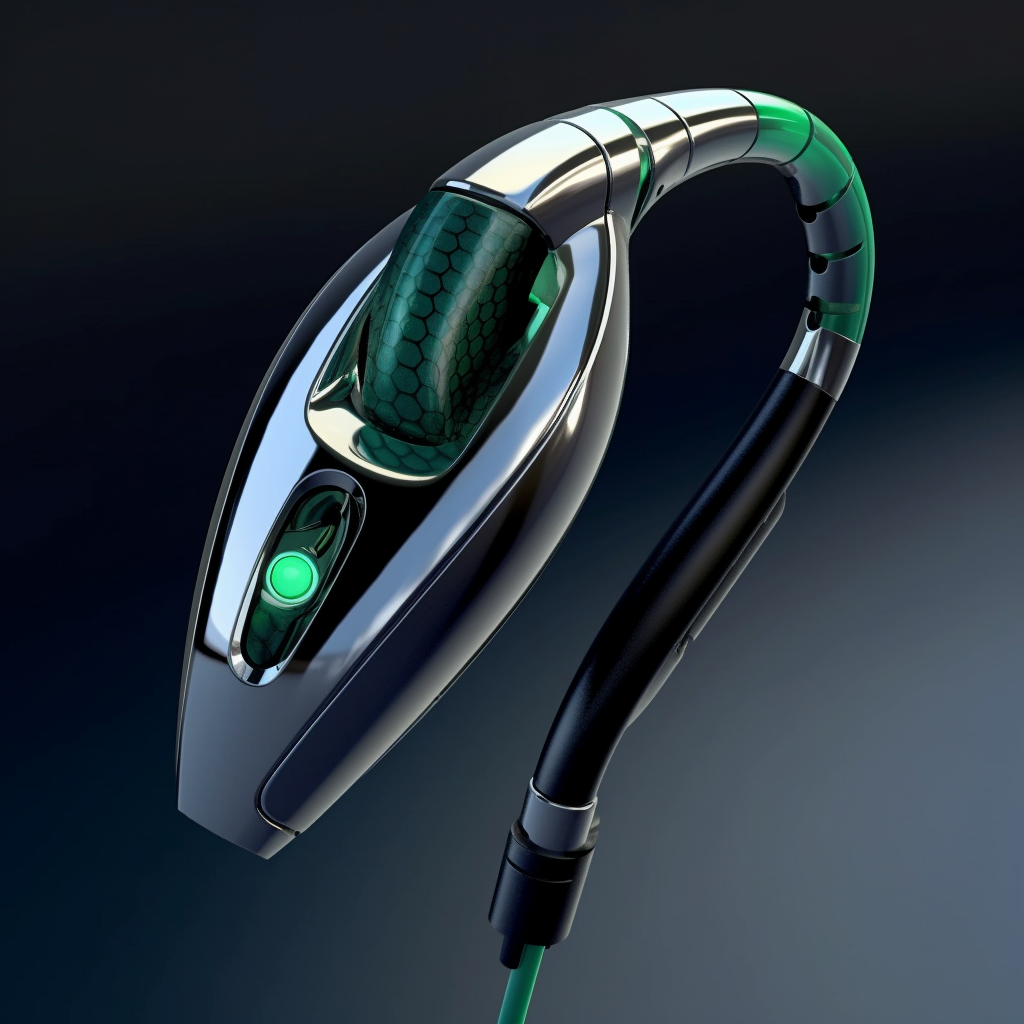

Psi Shield
The Terra Alliance created this deceptively simple device to protect high-value operatives in an age where individual psions wield artillery-level power. Disguised as an ordinary earphone with ergonomic earhook, it nestles against the user’s left ear, concealing revolutionary defensive technology behind mundane appearance.
For over a decade, the Psi Shield Device remained an exclusively Alliance technology, providing their operatives with a decisive advantage in psionic warfare. Agents like Lorna Weiss could operate with unprecedented boldness, knowing their personal shields provided reliable protection against most conventional threats. The psychological effect on enemies was equally valuable—facing opponents who could shrug off small arms fire while remaining mobile and aggressive demoralized many potential adversaries.
Recent intelligence reports have shattered the Alliance’s comfortable monopoly. Rakshasa operatives have been observed utilizing what appear to be functionally identical Psi Shield Devices during operations across Venus and the outer colonies. The implications are deeply troubling for Alliance strategic planners. How the Rakshasa acquired this technology remains a mystery that haunts Alliance intelligence agencies.
Soul Barrier: The device’s genius lies in reactive defense—the device sleeps until sensors detect incoming threats, then instantly manifests protective barriers using the wearer’s Aether. Bullets fragment against ephemeral shields, energy beams scatter through dimensional barriers that exist for microseconds. Integrated haptic feedback warns users when energy reserves run low, preventing catastrophic depletion mid-combat.
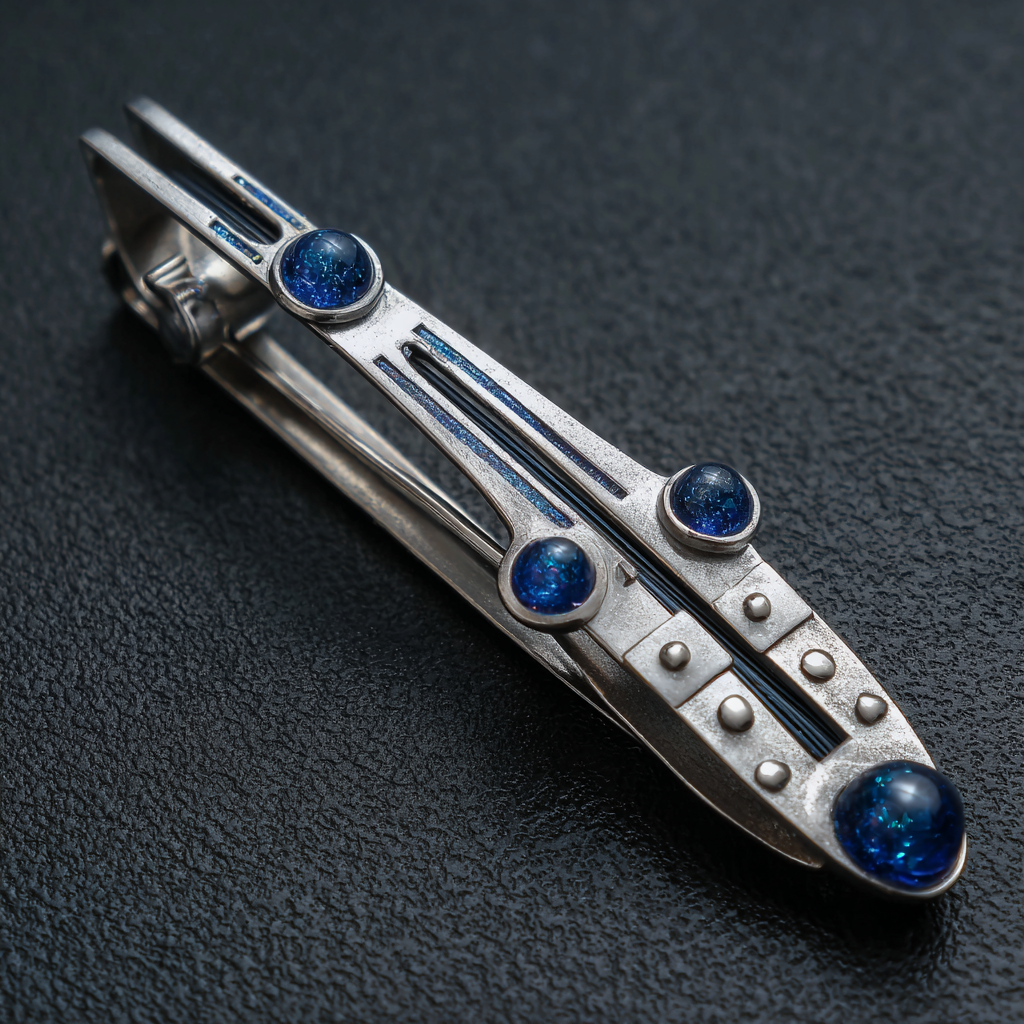
Programmable Hair Clip (PHC)
This quantum-fiber hair accessory appears deceptively simple—a metallic clip with subtle blue accents. Originally developed for deep-cover operatives who needed instant appearance changes, these devices manipulate hair at the molecular level through controlled quantum field compression, and have become popular for Leased Lilies throughout the Seven Realms.
Technical Functions:
- Contains programmable nano-fibers that weave through hair strands
- “Contract Mode”: Draws hair into a compressed quantum state, effectively shortening it to preset length
- “Release Mode”: Allows hair to return to natural length and volume
- Hair remains fully intact—just temporally compressed rather than cu
- Optional pheromone modifier can alter the wearer’s natural scent by adding compounds to their perspiration
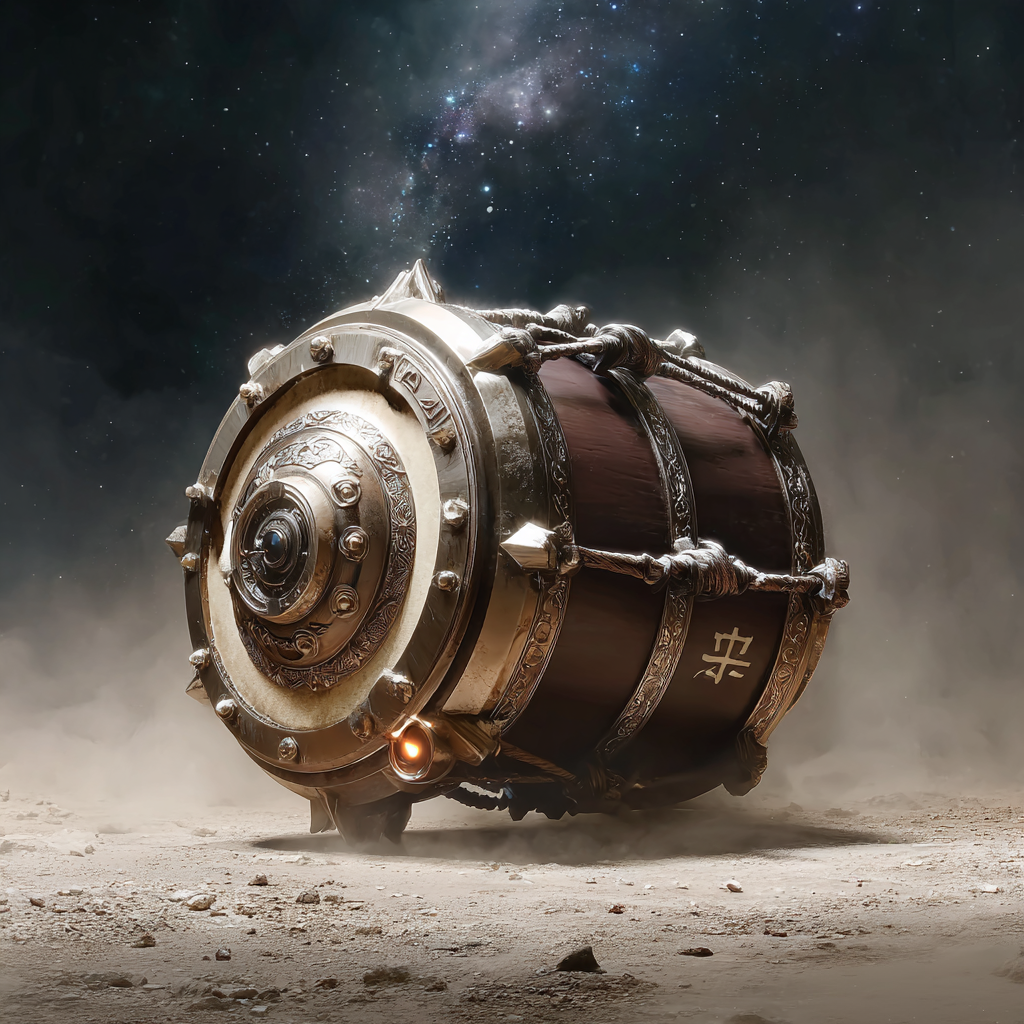
Echo Drum
One-handed percussion device that Griots wear on their hips, these compact drums are crafted from Martian titanium and synthetic membranes that respond to both physical strikes and psionic impulses. When activated, they create overlapping acoustic fields that serve multiple combat functions. Only Griots can use these.
Combat Applications:
- Rhythm Shield: Rapid drumming creates sonic barriers that deflect projectiles for 2-3 seconds—just enough time to reposition
- Echo Location: Silent psionic pulses through the drums map enemy positions through walls, sharing this data with allied Nucleus Watches
- Momentum Sync: Sustained rhythms boost the Griot’s movement speed by 40% and allies within earshot by 20%
- Disruption Beat: Specific frequencies interfere with enemy Nucleus Watch targeting systems and Radi-Mon pack coordination

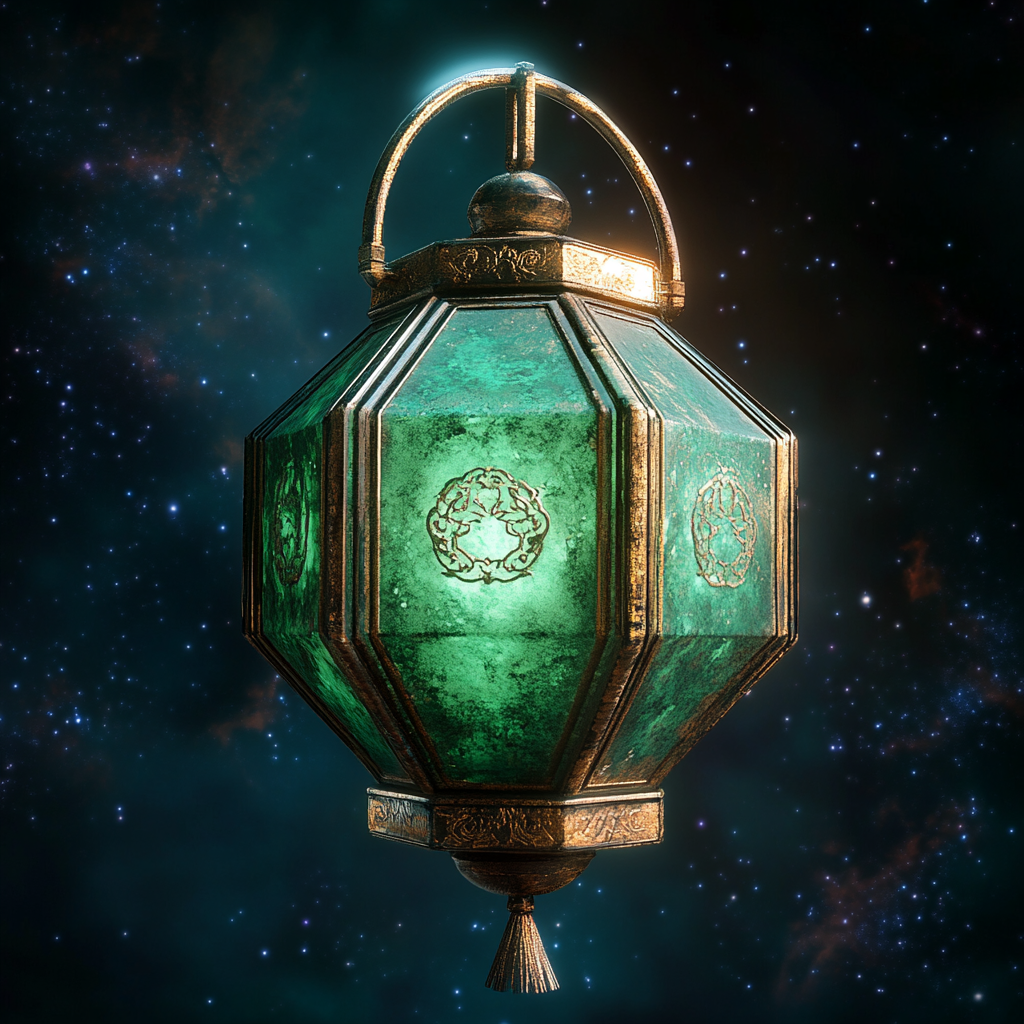
Spirit Lantern (法魂燈)
The Spirit Lantern represents the Rakshasa’s fusion of ancient spiritual practices with advanced psionic technology. These ornate hexagonal devices serve as both ceremonial artifacts and formidable battlefield implements. Nearly the size of an adult’s head, these weighty devices telescope into compact forms that can be concealed within traditional robes or modern tactical gear. The braided handle serves as both activation mechanism and personal attunement interface, bonding the weapon to its wielder’s unique psionic signature.
When activated, Spirit Lanterns defy gravity to hover at their user’s preferred height, typically shoulder or head level. The internal illumination shifts to match the wielder’s psionic attunement: golden light for Solar practitioners, silver-blue for Lunar masters, deep purple for Mirage specialists, emerald green for Void users, and crimson red for the rare Eclipse adepts.
Spirit Lanterns function as powerful psionic focuses, amplifying their user’s natural abilities. The floating position allows for 360-degree spell projection while keeping the user’s hands free for secondary weapons or ritual gestures.
Advanced practitioners can manipulate their lanterns independently, using them as mobile spell anchors to cast from unexpected angles or maintain magical effects while physically relocated. This capability proves especially valuable in complex urban environments where line-of-sight limitations hamper traditional combat.
During the Moaning Lotus Ritual or the Tasting, paired lanterns create resonant fields that enhance the ceremony’s effectiveness, showing how Rakshasa seamlessly blends intimate spiritual practices with psionic applications.
Consumables
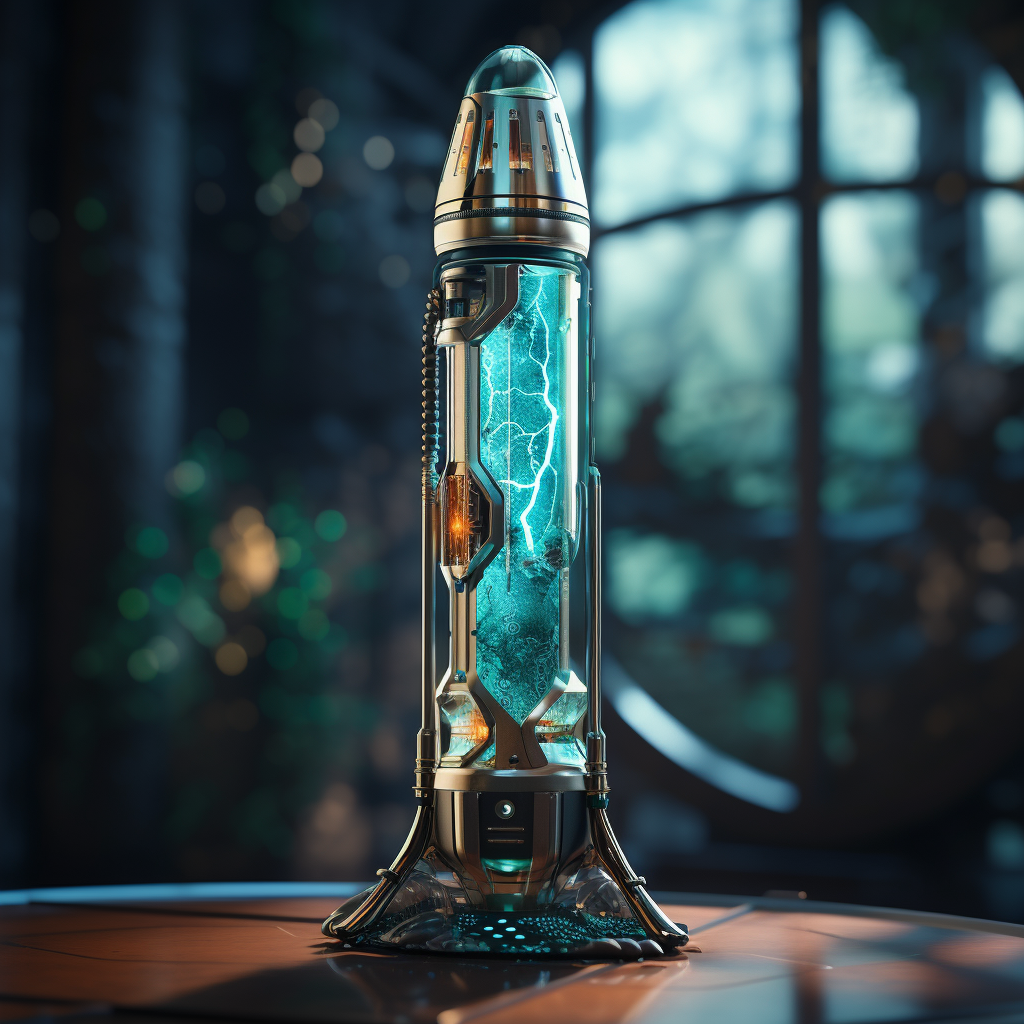
Medi-Vap
This is an Terra Alliance invention by Dr. Martin then improved by Directorate scholars in the realm of medical care. The pocket-sized, cylindrical vial is designed to be vaporized and inhaled through the lips, this aerosolized medication speeds up the user’s metabolism, facilitating rapid wound healing from bullets, blades, and bruises.
It has also proven effective against sexually transmitted diseases (STDs) that once plagued humanity, including Syphilis, AIDS, and Gonorrhea. While it has rendered traditional protective measures like condoms obsolete, it also has a drastic side effect: infertility. Excessive use of Medi-Vap has been strongly correlated with infertility in both women and men, as it inadvertently kills both sperm and eggs. This side effect contributes to the broader societal challenge of population decline—a pressing issue in modern societies.


Indra-Sprite
Originating from the culturally rich Indonesia and made from Mangosteen, Salak, Lychee and Blue Durian, Indra-Sprite is an elixir renowned for its replenishing and mood-enhancing effects. A single sip offers an immediate surge of Aether, allowing psionic practitioners to maintain their powers at peak levels. In Indonesian culture, Indra is the king of the gods, often associated with rain and thunderstorms, symbolizing rejuvenation and vitality. This reflects the potion’s nature as a medicinal drink, fitting for its replenishing properties.
Indra-Sprite is also available in water-soluble capsules, which can be added to drinks or taken with water like an average capsule. However, overconsumption of Indra-Sprite when one’s Aether is drained can induce insomnia, anxiety disorders, or recurring stomach pain. Psionic individuals are advised to consult doctors before use.
When Indra-Sprite is over-extracted, its effects change dramatically. Rather than replenishing Aether, it enhances sexual performance and pleasure for a limited time. Men experience increased libido, prolonged erections, and higher semen volume. Women who consume it produce more vaginal lubrication. These effects last between 3 to 7 hours, the exact duration depending on the individual user’s health, age and general physiology. This variant of Indra-Sprite, due to its unique properties, commands a premium price—a staggering 690% higher than the standard version—and is commonly found in night clubs and Leased Lilies venues.

Catalyst-U
Containing unique nutrients only found in Uranus minerals, Catalyst-U is a specialized supplement capsule designed for psionic individuals. Usually safe, it can enter the bloodstream at varying rates and quantities depending on methods of intake. When swallowed with water, it boosts the user’s Aether capacity for 17 hours, allowing them to cast more spells while calming their mood. It can also help a Radi-Mon stay in good health, while accelerating mental development.
Alternatively, crushing Catalyst-U in the mouth and consuming it with Indra-Sprite triggers a unique chain reaction in the body, stimulating the psionic DNA within the cells. This results in an amplified spell casting, capable of dealing significant damage and turning the tides of combat. While preferred by many Alliance Psi Lynxes, many doctors advise against this use case. Some users taking the medicine this way experience tinnitus afterwards, requiring rest and recovery.


Bodhi Agni (बोधि अग्नि)
A crimson spice native to the Arabia Terra region of Mars, Bodhi Agni (“The Fire of Enlightenment” in Devavāṇī) grows in the harsh Martian soil near volcanic vents and Zephyrium deposits. The plant evolved to absorb trace minerals from Mars’s iron-rich regolith, giving it its distinctive blood-red color and unique properties.
Bodhi Agni has a complex flavor profile—initially sweet like cinnamon, followed by a slow-building heat that warms rather than burns. It’s prized in both Martian colonial cuisine and Earth’s high-end restaurants. The spice is notoriously difficult to cultivate outside Mars’s specific atmospheric conditions, making it one of the Inner Sol’s most expensive seasonings. A single kilogram of Bodhi Agni can fetch up to 5,000 Atomic Dollars on Earth, leading to dangerous harvesting expeditions in Radi-Mon controlled territories on Mars.
Main Effects:
- Thermal Regulation: Consuming Bodhi Agni raises core body temperature by 1-2 degrees Celsius for 4-6 hours, providing natural protection against cold environments
- Enhanced Metabolism: Temporarily increases metabolic rate by 15-20%, aiding in healing and recovery
- Psionic Conductivity: Some users report slightly enhanced Aether flow, though this may be psychosomatic
Side Effects:
- Excessive consumption can cause persistent fever-like symptoms
- Non-Martian adapted individuals may experience vivid dreams
Resources
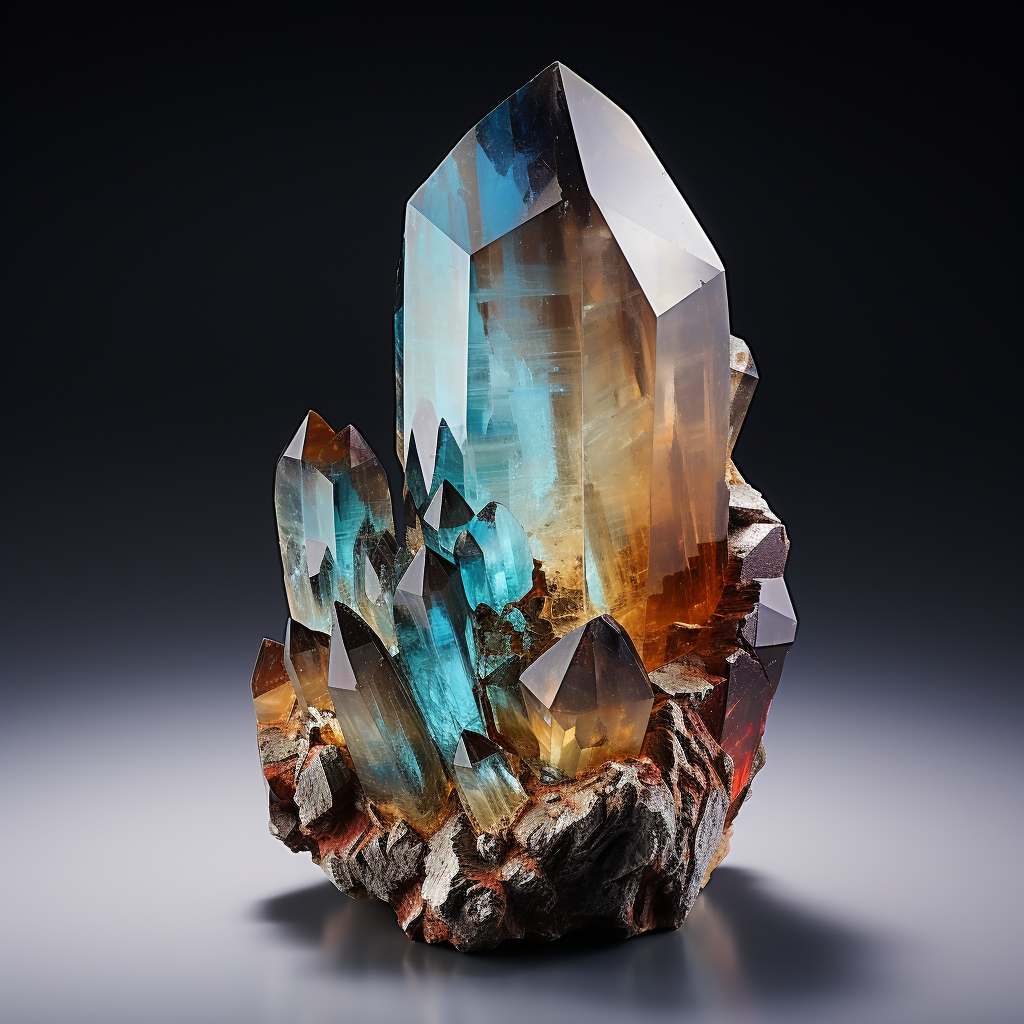
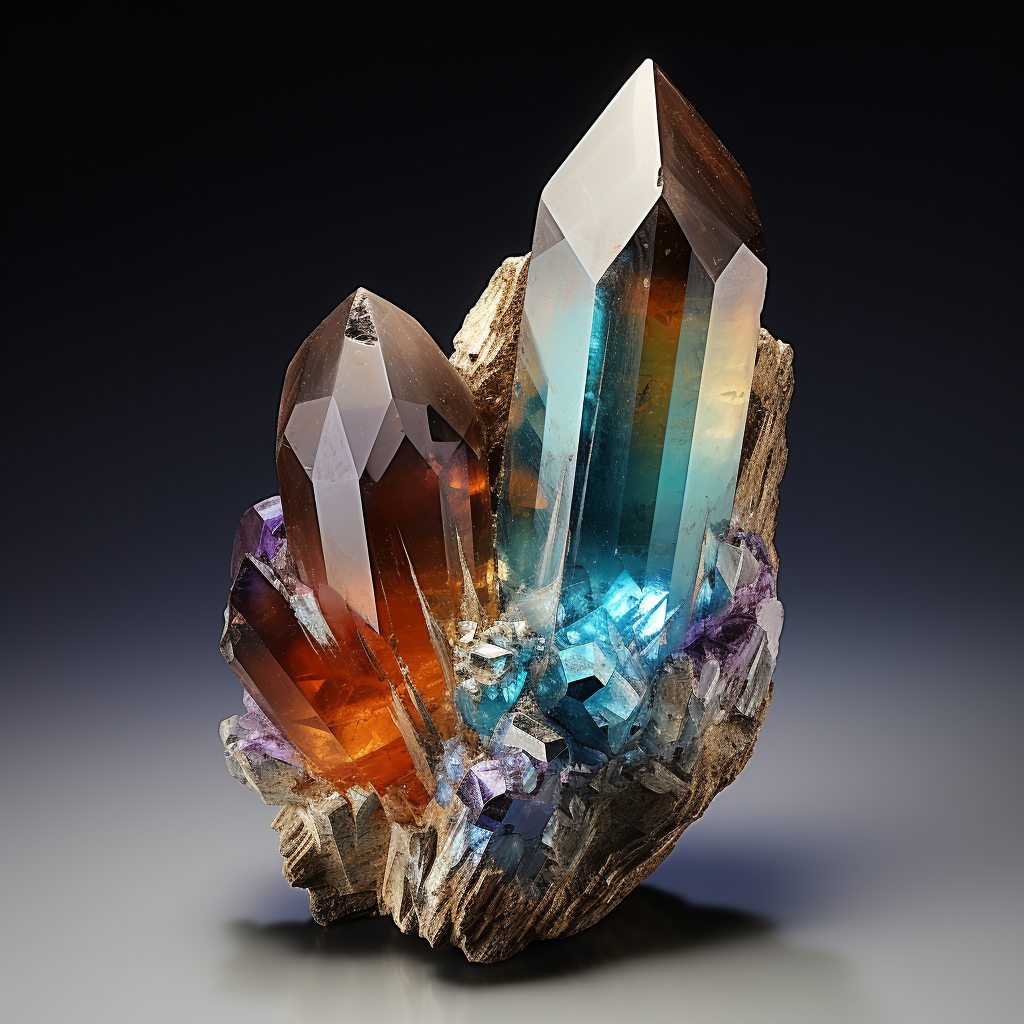
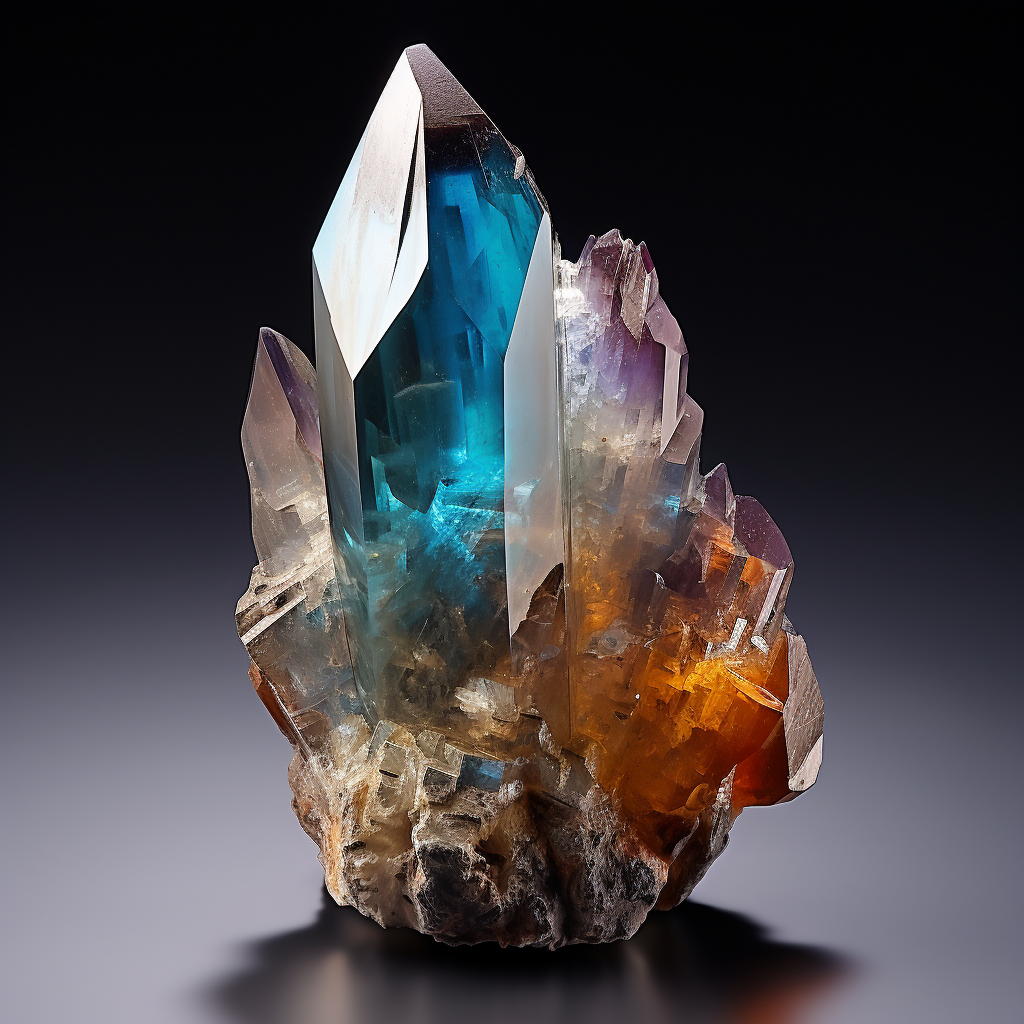

Zephyrium (核風礦)
A crystalline mineral of unparalleled potential, Zephyrium serves as the cornerstone of the Atomic Era’s technological advancement. Originally discovered in the icy depths of Titan, this rare mineral’s ability to facilitate cold fusion has revolutionized energy generation, offering a clean and potent power source for both humans and Radi-Mons. Zephyrium powers sustainable, efficient cold fusion, providing a near-inexhaustible energy source for cities, space vessels, and advanced technologies.
Distribution
- Mercury: Small, scattered deposits that remain largely unexploited due to the logistical challenges of operating on a planet with extreme temperature variations
- Venus: Boasts the highest concentration in the Inner Sol, making it a hotspot for mining operations despite the planet’s harsh conditions
- Earth: Deposits primarily concentrated in Africa, with smaller veins found in extreme environments including deserts, tundras, and highlands
- Osram (Moon): Moderate deposits, heavily contested by major factions
- Mars: Modest deposits comparable to Osram
- Jupiter: High concentrations, particularly on the Galilean moons
- Saturn: Extensive surveys remain incomplete due to the strong Radi-Mon presence; potential deposits obscured by the planet’s powerful electromagnetic fields
- Uranus: Believed to contain the richest deposits in the Sol System, but the extreme distance makes extraction economically impractical
- Neptune: Moderate concentrations theorized to exist, but detailed exploration has been limited by both distance and the mysterious behavior of scanning equipment in Neptune’s orbit
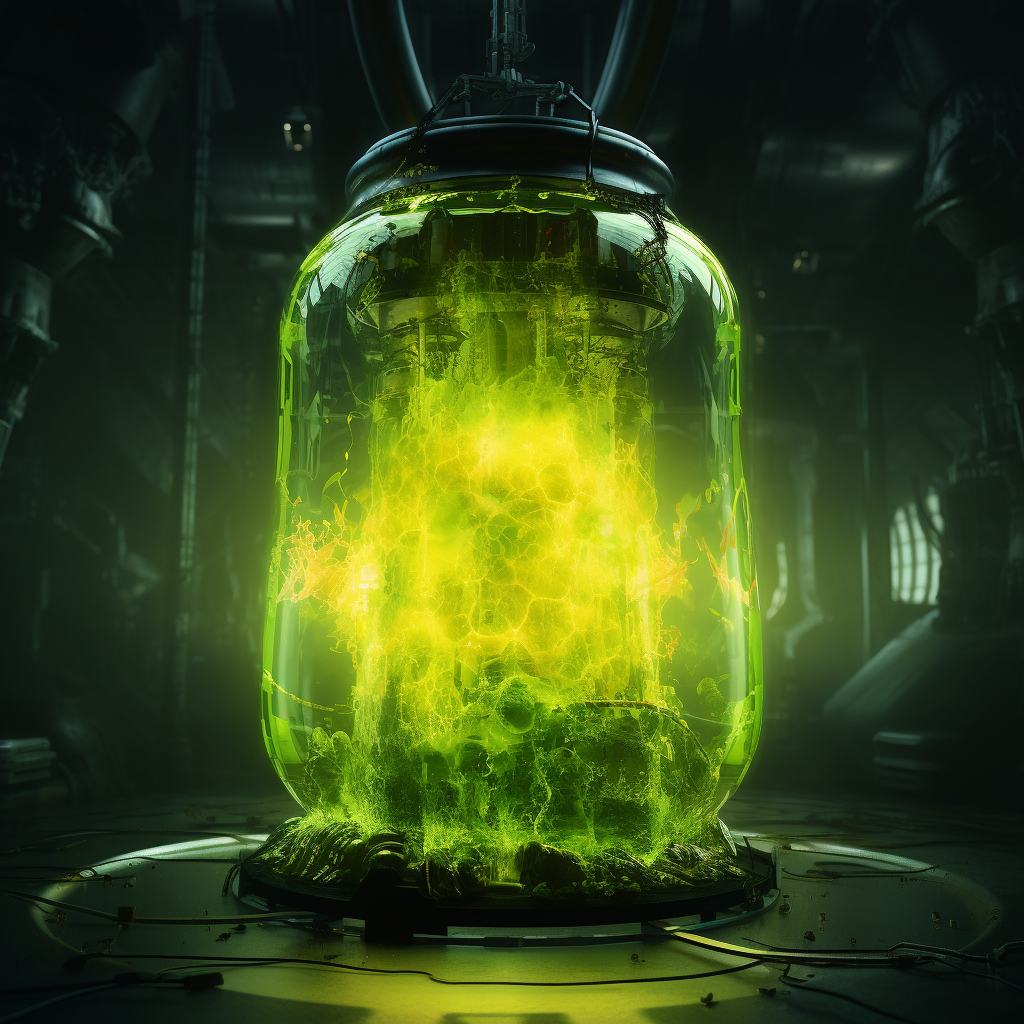
Helionite (日沸泥)
A luminescent slurry with a distinctive green glow, Helionite is the primary byproduct of cold fusion processes powered by Zephyrium. Named after the helium produced in fusion reactions, this substance has become ubiquitous wherever fusion technology operates.
Helionite manifests as a semi-liquid substance with unusual properties that allow it to remain stable under most conditions. Its environmental impact is minimal compared to radioactive waste from fission reactors of the Digital Era, though proper containment remains essential.
Most fusion power facilities store Helionite in secure underground facilities, where it poses little threat to surrounding ecosystems. However, irresponsible disposal has created “Helionite dumps” in various regions, drawing Radi-Mons who consume it as their primary food source.
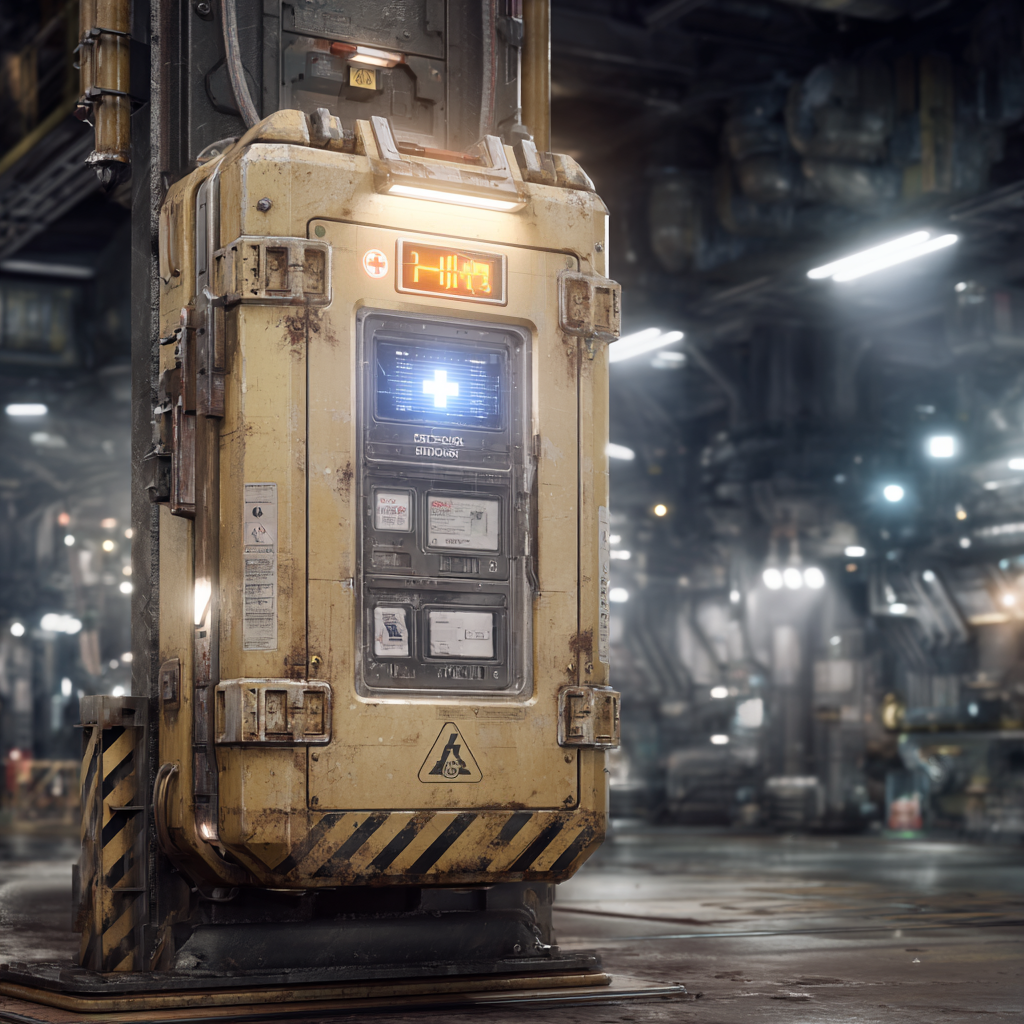

Self-Service Repair Kit (SSRK)
The Self-Service Repair Kit represents humanity’s pragmatic answer to frontier survival across the Sol System. These wall-mounted emergency caches appear in maintenance tunnels, mining stations, and remote facilities wherever humans push beyond civilization’s edge. Encased in reinforced polymer measuring 60cm x 40cm x 25cm, each 8-kilogram unit features distinctive yellow chassis with black hazard stripes and holographic amber lock pads. Magnetic mounting ensures they stay secured during everything from Mars dust storms to Jupiter’s gravitational fluctuations.
Inside, preservation foam maintains contents for years. The Repair Bay holds fabric patches, thermal sealant tubes, stitch-guns, and emergency blankets—tools for fixing both equipment and shelter. The Sustenance Bay provides self-heating meals, protein bars, and water purification tablets. The Medical Bay stocks Medi-Vap shots, bandages, burn gel, basic antivenom, and painkillers. Approximately 15% of SSRKs contain hidden caches from previous users: cigarettes, credits, ammunition, and surprisingly often, pornographic data chips alongside handwritten love letters.
Regional variations reflect local priorities and culture. Mercury stations pack extra coffee and condoms (mining crew essentials). Venus facilities stock ice-cold drinks and condoms to combat atmospheric heat. Earth rarely sees SSRKs, relying instead on traditional infrastructure from the old world. Mars favors instant noodles, ginger tea, and condoms (frontier comfort). Jupiter’s hedonistic station culture demands cigarettes, alcohol, and aphrodisiacs but notably excludes condoms. Uranus stations contain every illegal drug imaginable plus condoms, reflecting outer system lawlessness. Neptune remains too remote for SSRK distribution, while Saturn’s Radi-Mon territories ensure no human facility survives long enough to maintain them.

Indra Fountain (इन्द्र कुण्ड)
The Indra Fountain stands as humanity’s first encounter with Nirboh technology and the key to understanding psionic energy itself. These self-contained structures appear across the Seven Realms in locations ranging from established settlements to hostile wilderness—their presence often the only sign that the extinct Nirboh civilization once inhabited these worlds. The luminous liquid within restores Aether completely upon consumption, making each fountain a invaluable resource for psions operating far from civilization’s reach.
Historical records suggest that early human explorers discovered the first Indra Fountain on Mars in 2067, three years before the formal establishment of psionic theory. Chemical analysis of the fountain’s contents led directly to the development of Indra-Sprite—humanity’s first synthetic Aether restoration compound. Each fountain bears the Sanskrit inscription “इन्द्र” (Indra) etched into its base or housing, often accompanied by geometric patterns scholars believe represent psionic flow diagrams. The architectural styles vary dramatically: some appear as ornate basins with elaborate metalwork, others as simple crystalline structures, and still others as massive installations that could supply entire military companies. Despite these differences, all Indra Fountains share two properties: their liquid glows with a deep blue luminescence, and they never run dry. Attempts to relocate, replicate, or reverse-engineer the fountains have universally failed. The structures resist damage, repair themselves when harmed, and cease functioning entirely if removed from their original locations.

Vishnu Fountain (विष्णु कुण्ड)
Found throughout the Seven Realms alongside their Indra counterparts, these structures dispense crystalline deep emerald liquids capable of closing wounds, neutralizing toxins, and reversing tissue damage within minutes of consumption. For frontier operatives and military units operating in hostile territories, discovering a Vishnu Fountain often means the difference between survival and another name on the casualty lists.
The first documented Vishnu Fountain was located on Europa in 2071, discovered by Nordic Commonwealth miners suffering from radiation poisoning after a reactor breach. Desperate and dying, they drank from the ornate basin marked with unfamiliar script—and recovered fully within hours. Corporate chemists reverse-engineered the fountain’s composition to create the first Vishnu-Vap formula, though corporate executives quickly deemed the name an unmarketable tongue twister. The rebranded “Medi-Vap” became one of the most profitable pharmaceuticals in human history.
Each fountain displays “विष्णु” (Vishnu) in Sanskrit characters, typically accompanied by intricate biological diagrams that some xenoarchaeologists interpret as cellular regeneration sequences. Vishnu Fountains self-repair, resist tampering, and cease functioning if relocated, suggesting the Nirbohs designed them as permanent fixtures rather than portable technology. Medical researchers continue to debate whether the fountains actually heal or simply accelerate the body’s natural regenerative processes to impossible speeds.

Rati Fountain (रति कुण्ड)
The Rati Fountain remains the most controversial and least understood of the Nirboh artifacts. These rare installations dispense milk-white liquid that grants unpredictable enhancements alongside one consistent effect: dramatically heightened libido in all who consume it. The random buffs vary wildly—some drinkers report doubled psionic output, others experience accelerated healing or enhanced physical capabilities—but the aphrodisiac properties manifest universally within minutes. Couples who drink from Rati Fountains frequently report overwhelming arousal and spontaneous sexual encounters in proximity to the structure.
Rati liquid produces no light but maintains an opalescent quality that shifts subtly in different angles. Popular Extranet theories suggest the substance is literally the breast milk of the goddess Rati, though xenoarchaeologists dismiss this as romantic speculation. More pragmatic researchers theorize the Nirbohs designed these fountains to enhance biological reproduction—perhaps as fertility aids for colonization efforts—though the random enhancement component remains unexplained.
The Sanskrit inscription “रति” (Rati) appears alongside diagrams scholars interpret as neural pathway maps, though some insist they represent something closer to pleasure centers or reproductive systems. Rati Fountains are significantly rarer than their counterparts, with perhaps one discovered for every ten Indra or Vishnu installations. The Rakshasa Horde considers them sacred sites integral to their tantric practices, often incorporating fountain pilgrimages into breeding rituals. Conversely, the Zorian Covenant officially categorizes Rati Fountains as corrupting influences, with Inquisitors ordering citizens to avoid them entirely. The Imperium maintains similar prohibitions, though enforcement proves difficult when frontier soldiers discover the combat advantages of temporary enhancements. The Terra Alliance takes a characteristically capitalist approach: several corporations have attempted to synthesize “Rati-analogs” for the enhancement drug market, with universally disappointing results.



Aether (ईथर)
In the era of cold fusion, it is commonly believed that Aether is an extremely rare and highly elastic energy that exists throughout all of space. It serves as the medium for light and other forms of electromagnetic radiation. This powerful force not only shapes the stars and planets, but also resides within all sentient beings. For those who possess psionic abilities, they can interact with this universal energy and channel it to cast spells.
In order to replenish their Aether, individuals can use potions, meditation, restful sleep, or participate in consensual sexual activity involving exchange of bodily fluids. Both feminine and masculine Aether have the ability to transform and replenish each other. The masculine Aether flows through Eight Extraordinary Vessels (奇經八脈(Qíjīng Bāmài) in oriental medicine) and transforms into feminine, while the feminine empowers the masculine by intertwining with it.
Aether can be found in various bodily fluids such as semen, menstrual blood, saliva, breast milk, and vaginal mucus. It is often used interchangeably to describe both male semen and female fluid as these are essential components of human existence.
To achieve spiritual peace and harness the full power of Aether, one must have a balance of both feminine and masculine energies within themselves. Leaning too heavily towards one side can lead to inefficiency in utilizing Aether. Complete abstinence or promiscuity are both viewed as negative practices as they either suppress or waste Aether. By maintaining balanced intimate activities and relationships, one can attain good health, longevity and spiritual growth. Intriguingly, this knowledge is not widely known, even among the most skilled psionic practitioners in human society.
The Awakening Phenomenon: When a non-psionic individual engages in intimate connection with a psion, the exchange of Aether-rich fluids can trigger what scholars call “Resonance Awakening.” The psion’s active Aether creates vibrational patterns that can unlock dormant psionic potential in their partner’s cell nucleus. This process requires genuine emotional and sexual connection – mere physical contact rarely suffices.
Universal Flow – Beyond Binary: Aether transcends biological sex, flowing through patterns of giving and receiving energy rather than strict masculine/feminine divisions. In same-sex unions, partners naturally alternate between projective (yang) and receptive (yin) roles, creating the same harmonious circuit found in heterosexual couplings. The key remains consent, connection, and the conscious exchange of energy – not the configuration of bodies.
The Inheritance Paradox: Psionic parents producing non-psionic offspring baffles many, but the answer lies in Aether’s quantum nature. During conception, the parents’ combined Aether can sometimes “overcharge” the embryo’s development, causing the psionic nucleus to enter dormancy as a protective measure. These children often awaken dramatically during adolescence or moments of extreme stress. Conversely, some theorize that when both parents are exceptionally powerful psions, their energies may cancel each other out, resulting in a child whose potential remains forever sealed.
The Nucleus Connection: The term “Nucleus” in this saga refers not only to political and cosmic centers of power, but to the literal nucleus within every cell. In psions, specialized proteins in the nuclear membrane act as Aether conductors, allowing them to channel universal energy through their very DNA. Every sentient being’s nucleus is a miniature star, burning with the same cosmic force that ignites suns and shapes galaxies.
FAQs
How do currencies function across the different factions in the 23rd century?
The Atomic Dollar (A$) serves as the primary global currency, established by the Atomic Accord to facilitate interplanetary commerce. Digital in nature, it’s backed by a complex algorithm that factors in fusion energy reserves, Zephyrium deposits, and economic productivity across member nations. The Imperium Yuan (¥), while technically pegged to the Atomic Dollar, operates with greater autonomy within Imperial territories and their trade partners. Other regional currencies exist—such as the Directorate Cedis and Covenant Zloty—but most major transactions across faction boundaries use Atomic Dollars for simplicity.
Physical currency has become exceedingly rare, preserved mainly in museums or by collectors. Most transactions occur through encrypted quantum networks, using personal devices like Nucleus Watches or neural implants that interface directly with banking systems. The verification process involves quantum-encrypted biometric authentication that analyzes over 200 unique physiological markers, making counterfeit transactions virtually impossible. For travelers between factions, currency conversion happens automatically during transactions, with conversion fees determined by current diplomatic relations between the involved factions.
Why are certain technologies designed differently across factions despite serving similar functions?
Technological divergence across factions reflects both practical necessity and cultural values. The Alliance prioritizes user customization and modular design, exemplified by the highly modifiable 10mm Magnum. Their technology often emphasizes individual expression and market-driven innovation, frequently sacrificing standardization for personalization options. Imperium technology, conversely, follows strict standardization protocols with minimal variation between units, focusing on reliability, longevity, and centralized control—their Thermal Battleaxes undergo rigorous conformity testing before deployment.
The Directorate has pioneered bio-integration and environmental harmony in their designs, developing technologies that work with natural systems rather than against them. Their Sumina staffs incorporate living components that respond to environmental conditions. Meanwhile, Covenant technology often integrates religious symbolism and collective usage paradigms, designed for shared rather than individual ownership. These differences extend beyond mere aesthetics—they influence how technologies are manufactured, distributed, maintained, and eventually recycled within each faction’s territory. This technological divergence serves as both a practical adaptation to different resource availabilities and a powerful expression of each faction’s core philosophical outlook on humanity’s relationship with technology.
How has the prevalence of psionic-activated equipment affected those without psionic abilities?
The rise of psionic-activated technology has created both challenges and opportunities for the non-psionic majority. While weapons like Psytum Swords remain exclusively for psionic users, many manufacturers have developed hybrid technologies accessible to all. The most common approach involves “psionic simulators”—devices that generate artificial psionic fields that non-psionic individuals can interact with through specialized interfaces. For example, civilian-grade “Pseudo-Psytum” tools use standard fusion batteries to generate energy fields that mimic true psionic manifestations, though with significantly reduced power and duration.
Some non-psionic individuals opt for temporary psionic enhancement through drugs like Catalyst-U or specialized Spinal Orbs, granting limited psionic interaction capabilities for specific tasks. Others rely on psionic assistants, either human or advanced androids with integrated psionic circuits. This technological divide has sparked sociopolitical movements advocating for “psionic accessibility” in public infrastructure and technology design. The Alliance has largely embraced market-driven solutions to this divide, while the Directorate has implemented regulations requiring all public facilities to provide non-psionic alternatives. Meanwhile, the Imperium’s approach reflects their social hierarchy, with different access levels based on social standing rather than psionic ability.
